#goddess archetypes
Text
“Women who follow their own inclinations to become competitive swimmers, active feminists, scientists, statisticians, corporate executives, housekeepers, horsewomen, or who enter convents or ashrams exemplify virgin goddess qualities. In order to develop their talents and focus on pursuing what has personal value, virgin goddess women often avoid fulfilling traditional women's roles. How to do so—that is, how to be true to themselves and adapt to living in ‘a man's world’—is the challenge.
In mythology, each of the three virgin goddesses faced a similar challenge, and developed a different solution.
Artemis, Goddess of the Hunt, forsook the city, avoided contact with men, and spent her time in the wilderness with her band of nymphs. Her adaption mode was separation from men and their influence. This mode is analogous to that of contemporary women who join consciousness-raising groups and become feminists intent on defining themselves and their own priorities, or who work in women-run collectives and businesses that serve womens' needs. Artemis women are also represented by "rugged individualists," who go it alone and do what matters to them, without personal support or approval from men—or from other women, as well.
In contrast, Athena, Goddess of Wisdom, joined men as an equal or as a superior at what they did. She was the coolest head in battle and the best strategist. Her adaptation was identification with men—she became like one of them. Athena's way has been taken by many women who have joined the corporate world or who have succeeded at traditionally male occupations.
Finally, Hestia, Goddess of the Hearth, followed an introverted way of adapting by withdrawal from men. She withdrew inward, became anonymous in appearance, and was left alone. The woman who adopts this mode downplays her femininity so as not to attract unwanted male interest, avoids competitive situations, and lives quietly, as she values and tends the daily tasks or meditation that give her life meaning.”
-Jean Shinoda Bolen, Goddesses in Everywoman
48 notes
·
View notes
Text
𝔱𝔥𝔢 𝔤𝔬𝔡𝔡𝔢𝔰𝔰 𝔞𝔯𝔠𝔥𝔢𝔱𝔶𝔭𝔢


[I AM FOLLOWING AYESHA K.FAINES RESEARCH OF FEMININE ARCHETYPES]
↳ the sexual feminine archetype of the mystic archetype.

♇ when your percentage of the lover percentage is lower than 70%. and when your personal score matches with your percentage goddess the most. [your lover archetype is dominant and the mystic archetype is the second dominant too].
♇ the goddess is one of the sexual feminine archetypes that belong to the feminine archetype the mystic, whereas the other sexual feminine archetype is the enigma.
♇ people who belong to the goddess archetype are perceived to be sultry women, women who have an ethereal and laid-back essence which could be considered hypnotic and mesmerising to those around them. they have a type of emotional manner that keeps the people around them at arms-length.
♇ when developed, those who belong to the goddess archetype have an emotional intelligence that could be considered wise, and due to this, they might appear other-worldly to other people. even if they're people who are emotionally smart, due to them being distant to other people, they come off as aloof, but it is usually because they're focusing on themselves.
♇ as majority of them are naturally introverted, they are people who like solitude and isolation, sometimes like a hermit. and most of the times, they like to tend to hobbies that help them search inward, such as meditation.
♇ though, even though if they're introverted, they still like attention, they like being surrounded by their friends and loved ones.
♇ their appearance can come off as striking and to pair it off, they have a personality which could be perceived as distinct. as i have mentioned, goddess women like inner peace, so they tend to be interested in spirituality, connecting to something that is greater to them helps them feel comfortable, safe and protected.
♇ their most private area, where they feel the most comfortable is their home. it helps them keep a grounded energy. people find their energy to be alluring and pleasant, and even more enchanting and people find them to be at their most magnetic is when they're disappeared from the public, specifically when they're a celebrity. a good example, is alexa demie.

♇ she is known to hide in the shadows a lot, and sometimes, well actually majority of the times, it has people wondering what she actually wants for her career. an example can be seen in this video.
♇ overall, goddess women are stars, even said by Ayesha her self, they're a star light years away, and only a few people can see their qualities.
♇ when close to their loved ones, they appeal and encourage their dreams and future wants. when they're closed to the people they care about, they're like a warmer version of a siren, which could be considered a "mermaid". a calm mystic essence, an aura that can make people want to be around them more.
♇ the description of a goddess woman can include them having a sultry voice and lush hair. they're women who take care of their appearance as how they look likely matters to them a lot.
♇ on one hand, they can become people too fixated on other things that cut them off from their comfortability. and since they are people who attract all kinds of people, one of them being curious individuals, they sometimes get overwhelmed and get into hiding. underdeveloped goddess women sometimes are not able to express their creative and "erotic" energy.

♇ majority of the time, goddess women are peaceful and humanitarians. they're likely feminists and stand for a cause. and when speaking to them or hearing them speak, you'd realise they're usually kindly spoken people, very articulate.
♇ other people might see them as a young soul, or someone who brings refreshing energy. artistic energies, when fully developed they can easily bring their ideas to life.
♇ they like things that touch their soul, attracted to things that help them understand their roots and are not afraid to face their inner-depths. sometimes underdeveloped goddess women might fear to face their inner-depths to please other people in their life, to be a walking matt for them.
♇ as i did more research about goddess women, i understood that they can be deeply in touch with spirituality, and like to be very private. other people around them could sometimes feel like they cannot or dont live up to their potential. and sometimes this could lead people into thinking that they're stupid.
♇ they have a dreamy way of speaking, and even sometimes drag out their words. when they dont see themselves as the high value they are, they could get into relationships with people that dont really fit with their political views, specifically feminism.
♇ when it comes to their clothing, they like to wear garments that define their personality. could like aesthetics that are dark or portrays their femininity in a "broken" way. specifically lana del rey. most of them are into the vintage aesthetic, and have a style that other people want to replicate. [gabriette and alexa demie specifically].
♇ they're very expressive about their likes and dislikes, and most of the people i've watched are into getting tattoos, or are interested in having things that make their physique stand out.
♇ most of them have a strong connection with their mother and make-up, and sometimes they might allow make-up to help value themselves.
♇ goddess women understand that women can be many things, and can express themselves in ways the patriarchy dont want them to be elevated in. as they're seen as glamorous, they like to look good as they're usually under the spotlight. many goddess women have a popular partner, or even if their partner is unknown, they could be a respected person with an authoritative position. sometimes their partners could be their complete opposite.
♇ whenever goddess women are under the spotlight, the usually get meme'd a lot, or just whenever they do anything people speak about it. they could sometime feel suffocated by fame.
♇ as goddess usually represents fertility, it's not a surprise that most goddess women are into having a family of their own. but even if they want a family of their own, it doesnt mean they dont want to work, as i did research, i realised most goddess women were/are into modelling.
♇ they like to pursue a route that gives them happiness, so people in their social circle could think of them to be stubborn. they're usually questioned for their ideas and how they embrace their heritage and roots, and since they're usually questioned a lot, goddess women step into a role of being self-aware.
♇ some goddess women could be into cosmetic surgery, and can be a bit [but almost too much] into heteronrimity.
♇ their intelligence and beauty could be envied, they're open about their sexuality and most people look up to them for guidance. when doing research about them, i realised that a lot of them have been victim of sexual shaming, [even though many people have been in general, this has also happen to some of my friends who do belong to this archetype].
♇ when it comes to their appearance, a lot of them have doe/bug eyes, have luscious hair, they also have an earthly and natural type of beauty, which can make them be deemed as elegant and graceful.
♇ they like to be prepared for anything, especially career wise. and women who belong to the goddess archetype like to experience almost everything with their partner. sometimes might be seen as someone who is smothering. on the other hand, even though they like to be around their partners a lot, they also like to be private.
♇ and in a friendship group, they might be seen as the mother of the group, or you could say leader of the group. can be into making food, and also specifically the art of it. unlike the mother archetype, they dont only/mainly do it for their partner, they do it for themselves, their friends and the people they care about.
other goddesses ↴
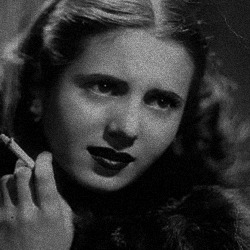
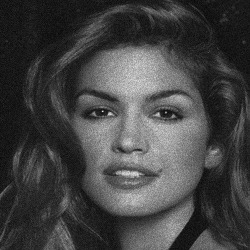
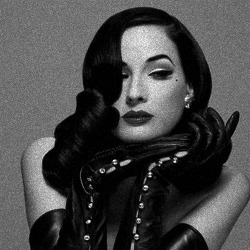


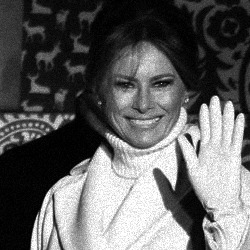
♇ goddesses i put above are eva peron, cindy crawford, dita von teese, jisoo, grace kelly and melania trump.
♇ understanding the goddesses archetype, is that it shows that they are women who are usually do focus on themselves, and can be so to themselves to the point that other people might feel like they do not know them at all.
♇ and to make the goddesses archetype easier to comprehend i gathered characters from different tv shows or films that come under the archetype.
♇ from yellow jackets - lottie matthews, lottie. is a big example of an underdeveloped goddess archetype, though it isnt necessarily her fault due to the trauma she has gone through while stuck in the wilds. she is a very spiritual person, and even isolates herself with other people to find herself. but due to her spiritual nature, people easily found way to see her as a leader and was advised for her guidance, during the time the team were stuck in the woods, lottie was seen as somewhat as a mother [not to be confused as the mother archetype as they are striking differences between the two]. she helps other people express their emotions and speaks about spirituality that could make other people uncomfortable.
♇ from the maden men franchise - betty draper, her character strengthens my idea that a lot of goddess archetypes are models, as she was a model for a print ad. she is a character who gets with a romantic partner that has authority, her romantic partner, don who is a completely different person to her, made betty express versions of herself that she disliked and wanted to change for the better.
♇ we have the addams family - morticia addams, for the fictional goddess women, morticia addams is a patron saint of what a goddess archetype is. her husband, gomez kisses the floor she walks on, morticia is a seductress and has a striking appearance that fascinates other people and makes other want to replicate her style, in real life [like vanessa hudgens] and in the show, wednesday. she is soft spoken, almost dreamy like and could be considered as laid-back and ethereal.
♇ from the postman always rings twice - cora smith, a mysterious woman who is married to someone who has authority, [an older man]. is perceived as a character that can also be deemed as an underdeveloped goddess archetype, who uses the love a man has for her to aid her to kill her husband.
♇ the fall of house usher - verna, another mysterious woman who does keep people at arms length, people come to her to have once in a life time deal, she uses her erotic energy to lure people in and capture them. she is wise, and has a calm essence that makes people comfortable around her. verna is prepared for everything and knows how to handle obstacles like how the two siblings, specifically the man went against her deal and hunted everyone in the usher family down.
♇ we have from the infernal devices and shadow hunter chronicles - tessa gray/herondale, like the other goddess archetype, tessa gray has a romantic partner who has high authority from the novel she is from. will herondale is the leader of the clave and is well respected. aside from that, tessa is usually under the spotlight because of what she is, and is seen to be someone who is serene, wise and has a warm energy that has many people want to be around her, but as she gets older, she does keep people at an arms length. in the early books, fertility was a big theme for her, as she was unsure if she could have children because of her being a half-demon. like a goddess archetype, tessa herondale has a grounded energy and has a striking beautiful appearance that other say is unconventional.
♇ from lore olympus/greek lore - selene, being a goddess herself, selene is someone who is respected and under the spotlight as she is a prominent and important figure for those who worship her, and like most women from the goddess archetype, she is someone who wants to have many moments with her loved ones, like endymion. a deity of fertility, she is someone who likes to keep in the shadows unlike her brother, helios who is considered to be flashy. selene has a personality that could be deemed as peaceful and timid like most women under this personality type.
♇ from the witcher franchise - yennefer of vengerberg, fertility was a big element to her character, as having a child was something she was not able to do, but with geralt, ciri was able to be her child surprise. and like the other goddess archetypes, yennefer is seen with a partner of authority/power, and it being geralt. her beauty is perceived as other-worldly, and becoming [beautiful], and powerful was so important to her that she constructed herself to become a better version of herself in a painful manner. there was a moment of the show, [i'll play the games later], that there had to be much internal search because she had lost her powers for a brief moment.
♇ next from legacies, there is josie saltzman - looking within herself was a big theme for her character, because she was known to be a character who was in her twin sister's shadow, lizzie for a long time; to the point that other characters had almost forced her to become a better version of herself, and even stand up for josie to her sister. josie was almost like a glass child. her main relationship, or most known one, is with someone who is the opposite of her, penelope, someone who had high authority within the boarding school she was in. even though josie is timid and shy, she is very emotionally intelligent, which is why people like to be around her a lot. she is understanding and empathetic.
♇ lastly, there is a character from winx club, aisha - in the show aisha is one of the main characters who gave advice to other people, sometimes she can be perceived as the mother of the group, [once again, to not be thought as the mother archetype]. when aisha was younger, aisha was isolated, which kind of made her into someone who is explosive and has a strong temper. and when. the series began, aisha was seen as anti-social, but when she is gotten to know more, the people around her are more aware of her open-minded traits.
♇ as i have done my research, i gathered that a lot of enigmas are are likely going to have capricorn, taurus and scorpio in their big six; in order of how much they appeared.
♇ they are also going to have leo, aries and taurus appear in their dominant signs; in order of how much they appeared.
♇ the planets sun, saturn and moon appeared in their dominant planets the most; in order of how much they appeared.
♇ the element that appeared the most was fire, second was earth.
♇ lastly, when it comes to the modality, what appeared the most was fixed.

♇ feminine archetype masterlist
to find out what feminine archetype and sexual feminine archetype you are
buy a natal chart reading from me
masterlist
♇ pluto

#goddess archetype#the goddess archetype#the mystic archetype#mystic archetype#feminine archetype#the feminine archetype#alexa demie#lana del rey#gabriette#claire nakti#eva peron#cindy crawford#dita von teese#jisoo#grace kelly#melania trump#lottie matthews#betty draper#morticia addams#cora smith#verna tfothou#tessa gray#selene#yennefer of vengerberg#josie saltzman#aisha winx
268 notes
·
View notes
Text

— 𝑇𝑖𝑡𝑎𝑛𝑖𝑐, 𝑑𝑖𝑟. 𝐽𝑎𝑚𝑒𝑠 𝐶𝑎𝑚𝑒𝑟𝑜𝑛 (𝟏𝟗𝟗𝟕)
#titanic#kate winslet#female rage#femcel#female hysteria#hell is a teenage girl#girl interupted syndrome#portrait of a lady on fire#hope is a dangerous thing for a woman like me to have but i have it#ultraviolence#he hit me and it felt like a kiss#eternal sunshine of the spotless mind#female manipulator#lana is god#manic pixie dream girl#dark feminine energy#goddess#dark femininity#divine feminine#this is a girlblog#girlblogging#just girly things#sad girl club#hyper feminine#sofia coppola#feminine archetypes#2014 tumblr#ethel cain#femcelcore#femme fatale
62 notes
·
View notes
Note
reverse unpopular opinion for....aw heck, go ahead with Rhea for this one as well
This might as well be a part 2 to the previous Rhea ask so :D
I find Rhea to be so compelling for several reasons, one of the biggest being the inherent contradiction that she is very much capable of caring, loving and trusting others, sometimes with some insane gestures when you realize their meaning behind them (ie. Saving Jeralt's life by giving him her blood thus risking outing herself because of it, letting Catherine keep Thunderbrand despite the fact it's the one Relic she could safely recover- implicitly trusting her with one of her family's remains without any obligation to do so, risk angering a noble house to give Cyril a better life and treating him like her son in all but name)... And yet she cannot, for the life of her, bring herself to be honest with them.
Something fascinating I noticed about Rhea is that she ironically seems to prefer people who are blunt with her, because look at the people she's closest to - Seteth spends all of Part 1 openly questioning her, Flayn is constantly on the verge of accidentally outing herself, Cyril is so direct and honest he sometimes accidentally comes off as rude (Shamir too even if she's not as close to Rhea) and Catherine wears her heart on her sleeve.
Heck, all of them are either not that religious or outright non-believers, which ironically I believe helps reassure Rhea they love her because of who she is as a person and not because she's the archbishop, especially given how much she implies to find the position incredibly alienating.
And isn't that just so fascinating? That she is more than capable than loving others and caring for them risking her own personal safety, she appreciates people being honest with her.... But cannot, will not be entirely honest with them in turn.
Because make no mistake, that right there is Rhea's true fatal flaw: her compulsive need to keep everything a secret.
From the big but understandable stuff that would get her and her family scrapped for parts if it became public to downright pointless shit to hide like not liking hot drinks, and it's the one trait that screws her over the most, between being the reason Jeralt left (since she didn't tell him ANYTHING about what happened with Byleth so he assumed the worst and fled) and the thing preventing her from making connections as deep as she actually wants (like even just telling her loved ones how much they mean to her), as well as getting the support she actually needs. And because she feels she has to bear everything on her shoulders, she crumbles under the weight because no matter how hard she tries, she will never be good enough.
In that sense the role of archbishop is a sort of mask to her. It's definitely a part of her, but also something she has sort of burrowed into like a safety net preventing her from being true to herself. Because that'd mean making herself vulnerable, in more ways than one. To say nothing about putting her surviving family and remnants of her dead kin to jeopardy.
If she were to open up she'd be... More lively, I think. Definitely sillier if Heroes is any indication, and arguably more willing to take a direct approach in helping people. And definitely more loved and happier.
And perhaps, one day she'd realize she doesn't need to bring her mom back to fix Fódlan. She's not doing it alone anymore, after all.
#ask replies#loregoddess#fire emblem#fire emblem three houses#fe16#fe16 spoilers#rhea#my rambles#is this coherent in any way? definitely not#i just love rhea as a deconstruction of the mikoto archetype#she wants to be like mikoto and lumera so bad but she can never measure up to them#and instead of seeking the help of others to compensate she tries to bring her goddess mom back#she's a foil to alear in that sense. i love them so much for different reasons#and i think they'd be great friends#like rhea's whole secrecy complex is definitely a product of her trauma#and i love it. i wanna put her in a test chamber and see how she functions#anyway again sorry for pretty much dumping words at random😅
93 notes
·
View notes
Photo

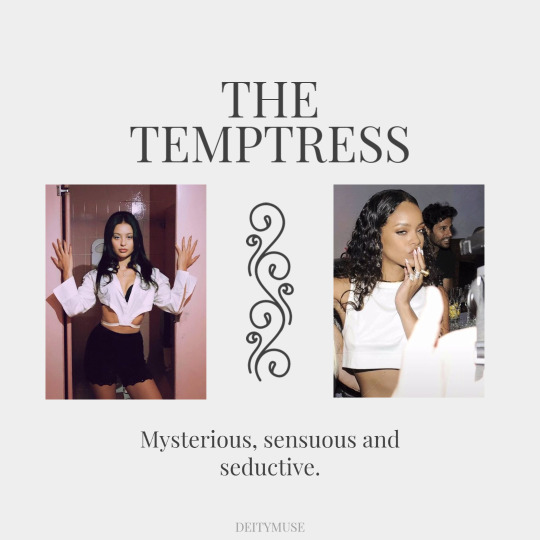
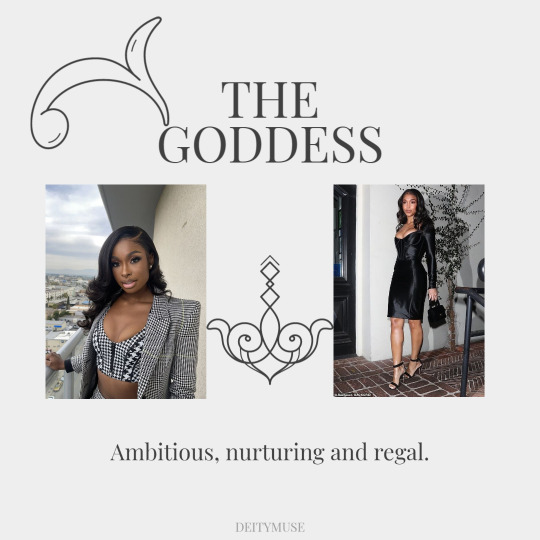
find which kitty archetype you are
#uquiz#quiz#archetype#kitty archetype#ariana grande#megan thee stallion#nicki minaj#coco jones#lori harvey#saweetie#rihanna#beyonce#halle bailey#alexa demie#chloe x halle#celebrity archetypes#sza#lana del rey#doja cat#the goddess#the temtpress#the princess
869 notes
·
View notes
Text
The Bad Batch arc in Clone Wars is deeper than you think!
I have seen many fans saying that the Bad Batch arc in the Clone Wars is fun and enjoyable, but it lacks depth. I disagree with that statement because I find this arc to be an important arc for Captain Rex, one of the protagonists in the Clone Wars. I will be referring to “Goddesses in Everywoman” and “Gods in Everyman” by Jean Shinoda Bolen for my analysis of the Bad Batch arc.

A Bright Soldier of the Republic
At the beginning of the Clone Wars, Captain Rex starts off like any other clone trooper – a soldier that is loyal to the Republic and follows orders. However, as the Clone Wars progresses, Rex starts to see past the illusion of an ideal Republic.
youtube
The YouTube video above has listed down five defining events that make him question everything. These five events are Slick’s betrayal, meeting Cut the clone deserter, the Umbara arc, Ahsoka being framed and hunted down, and Fives’ death. Surprisingly, these events evoke the archetypes each Bad Batch member has.

Event 1: Slick’s betrayal
In “The Hidden Enemy”, Captain Rex and Commander Cody are tasked to uncover a spy in their ranks, which turns out to be a clone trooper named Slick. The archetypes evoke from this event are Hades, Hermes and Athena – which are Tech’s archetypes.
When Rex and Cody spot someone running off, they chase him through dark corridors but they lose him amongst other clone troopers in the mess hall. The chase scene gives the feeling that Rex and Cody are in a maze, chasing down someone who bears a similar face as theirs. This feeling evokes the imagery of the Underworld, the realm where Hades rules over.
Slick takes on the Hermes archetype, though he leans more towards its negative aspects. Slick is angry that his clone brothers are being enslaved by the Jedi, and he is fighting for their freedom. He becomes a spy, exposing the Republic’s plans to Ventress, which helps the Separatists to take the Republic forces by surprise. He is able to think ahead of others as he blows up most of the Republic weapons before Rex and Cody can stop him, and he quickly hides in the command center.
To catch Slick, Rex and Cody have to take on the Hermes archetype. They guess that Slick is hiding in the vents and they act out a scene: Cody leaves his blaster on the table while Rex goes to “secure the lockdown”. Slick comes out of the vents and grabs Cody’s blaster. He has fallen into their trap as the blaster is empty and Rex comes up from behind him.
After Rex and Cody manage to apprehend Slick, they bring him to Anakin and Obi-Wan. Slick explains that the Jedi has enslaved his brothers and he is fighting for their freedom. Rex and Cody understand Slick’s intention, but they also point out that he has put his brothers in danger, and that he will not have done that if he truly cared for them. Rex and Cody both take on the Athena archetype as they are loyal to their generals Anakin and Obi-Wan. Although they understand Slick’s intention, they still choose to arrest him for treason.
The moral of this episode is "Truth enlightens the mind, but won't always bring happiness to your heart." Slick, who has a strong Hermes archetype, is able to see the dark truth of the clones. It is said that truth can bring enlightenment, but it does not guarantee happiness. It is possible that Slick feels like he is trapped in the Underworld when he discovers the truth. This leads him to take on the negative Hermes archetype of the trickster.

Event 2: Meeting Cut the clone deserter
In “The Deserter”, two surviving commando droids use a sniper rifle to critically wound Rex. To better treat his wound, Kix, Jesse and Hardcase relocate him to a farm that belongs to Suu and her children. Rex then meets Suu’s husband, who turns out to be a clone named Cut Lawquane. The archetypes evoke from this event are Dionysus, Zeus and Demeter – which are Hunter’s archetypes.
Cut takes on the Dionysus archetype. After the First Battle of Geonosis, his transport was shot down and his brothers onboard were slaughtered. Realizing that there was nothing to be done, he ran away and deserted the Republic. The experience still haunts him and he does not want to kill for a living. Cut probably feels that his purpose is lost in that traumatic incident, and he may have wandered around aimlessly until he meets Suu. Dionysus evokes the divine child archetype, which gives a sense of specialness to a person, evoking the personal feeling that “my” life has a sacred meaning. This archetype helps Cut to view all clones as unique individuals, and that they should have a choice in choosing the life they want. His viewpoint is supported by the fact that clones have names to make them feel unique in an army where everyone looks and sounds the same. Moreover, Cut tells Shaeeah that she can do whatever she wants with her life, which shows that his supports his children’s individuality – a Dionysus trait.
Cut also takes on the Zeus and Demeter archetypes. Zeus is associated with oath keepers, and Cut has sworn an oath to his family. Demeter is associated with agriculture, and Cut chooses to be a simple farmer. Cut also serves dinner to his family and Rex, which evokes the Demeter archetype as the food provider. When a platoon of damaged but still-functional commando droids begin to attack the farm, Cut goes on to defend his family, upholding his oath to them.
As Rex prepares to leave, he chooses not to report Cut as a deserter as he respects Cut’s choice for a peaceful life. His decision means that he starts to appreciate the divine child archetype within every clone, even though he still sees the soldier’s life is meant for him.
The moral of this episode is "It is the quest for honor that makes one honorable." Upon first meeting, Rex accuses Cut of being a deserter as he thinks that clones do not have a choice beyond a soldier’s life. To Rex, the quest for honor can only be found in being a soldier. However, after learning what Cut has gone through and hearing his side of the argument, Rex begins to expand his mindset. Upon seeing how Cut is willing to do anything to protect his family from danger, Rex sees Cut being a family man deserves the same honor as any soldier do. Hence, Rex no longer views Cut as a coward for deserting the army, and lets him live in peace with his family.
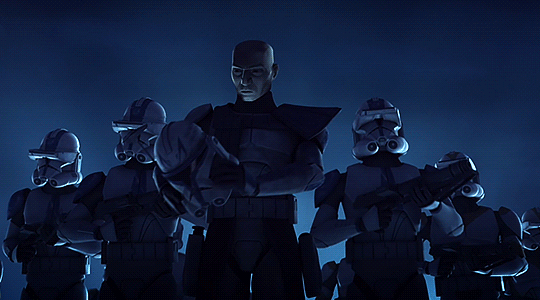
Event 3: The Umbara Arc
In the Umbara Arc, the clones have to deal with General Krell, who mistreats and dehumanizes them. The clones are outraged and seek Rex for guidance. Rex insists on respecting the chain of command as he is hesitant to speak against the Jedi General. However, once the clones find out that Krell is a traitor to the Republic, and he has staged a battle that causes the clones to unknowingly kill each other, Rex then leads the clones to arrest him. This incident causes Rex to realize that people with authority are not always good people, and he learns to trust more of his instincts instead of blindly following orders. The archetypes evoke from this event are Poseidon, Apollo, Artemis and Hera – which are Crosshair’s archetypes.
The clones are fighting on Umbara, a planet that has aggressive wildlife and murky conditions. The undomesticated wilderness of Umbara is associated with Poseidon and Artemis. Throughout the battle, the clones uphold their values of brotherhood and loyalty, which aligns with the Poseidon archetype. The creative aspect of the Poseidon archetype is demonstrated by the clones, most specifically Fives, Jesse, Hardcase and Tup. For example, Tup lures Krell to the carnivorous vixus plant, which causes Krell to be shaken down by the creature and stunned by Tup.
Throughout the arc, Rex keeps insisting the clones to obey Krell’s command despite the Jedi General is mistreating them, which evokes the Apollo archetype. Dogma greatly takes on the Apollo archetype as he follows orders without question. His tendency to follow orders is so great that he has no problem of executing Fives and Jesse for their insubordination, and he tries to stop Rex and the others from pursuing Krell.
On the other hand, Fives takes on the Artemis archetype as he openly and boldly voices his outrage at Krell’s mistreatment towards the clones. He is confident of his identity, saying that he is more than just a number, and that applies to all clones. He carries out his plans without the approval of Krell because he follows his instincts – an Artemis trait.
When Dogma realizes that Krell has betrayed the Republic and the Jedi General has taken advantage of his blind loyalty, Dogma takes on the spurned Hera archetype. He finds that all his loyalty and sacrifice have meant nothing to Krell, and he ends up killing Krell out of revenge (this also evokes the Poseidon archetype as the implacable enemy). Thankfully, as Dogma is taken into custody, he receives a nod of affirmation from Rex for his act.
There are four morals for the four-episodes arc.
"The first step toward loyalty is trust." – Loyalty means everything to the clones, which is also valued by Poseidon, Apollo, Artemis and Hera.
"The path of ignorance is guided by fear." – Rex is afraid of speaking against Krell and he tells the clones to obey his commands. His fear has led him to be ignorant of Krell’s true intentions.
"The wise man leads, the strong man follows." – Apollo is more of a follower, and he needs a wise man to lead him. The clones all take on the Apollo archetype, and they are in need of a wise general to lead them (and Krell is not that person).
"Our actions define our legacy." – There are times where our actions define our legacy, so we must make the right decision. When Fives and Jesse are ordered to be executed, the clones intentionally miss, indicating that they choose brotherhood over following orders that are clearly wrong, and they trust their instincts (positive Poseidon and Artemis traits). When Dogma realizes that Krell has taken advantage of his blind loyalty and has fooled him into killing his own brothers, he kills Krell as an act of revenge (negative Poseidon and Artemis traits).

Event 4: Ahsoka being framed and hunted down
When numerous acts of terrorism against the Jedi Temple on Coruscant have been committed, Ahsoka is being accused for those attacks. Ahsoka is in fact innocent and wants a chance to prove her innocence, but the Republic is unwilling to give her that chance. Ahsoka then flees to the Coruscant undercity, and the clone troopers pursue her and they are given shoot-to-kill orders. Rex and Anakin know that this is not right as they trust Ahsoka, and they do everything to bring her in alive. Rex realizes that everyone is disposable in the eyes of the Republic for they only care about the results. When Ahsoka is eventually proven to be innocent, it only reinforces Rex’s belief that the Republic does not care about its people. The archetypes evoke from this event are Ares and Aphrodite – which are Wrecker’s archetypes.
Anakin is very protective of his Padawan Ahsoka, and he is willing to do anything to defend her and prove her innocence, which is similar to how protective Ares is to his children in Greek mythology. Anakin seeks out Ventress for information, and warns her that he will kill her if she is lying. Then, he finds out that Barriss Offee is behind the attacks, and he manages to arrest her and prove that Ahsoka is innocent. Besides Anakin, Rex also believes that Ahsoka is innocent. He disregards the shoot-to-kill orders, and does everything in his power to bring her in alive. His protectiveness towards Ahsoka is an Ares trait.
In this four-episodes arc, Ahsoka takes on a heroine’s journey that is similar to Psyche, who mainly has the Aphrodite archetype. The Psyche myth serves a metaphor for the psychological growth that a heroine may go through. In this myth, Psyche was a pregnant mortal woman who wanted to be reunited with her husband Eros, God of Love and Aphrodite’s son. The four tasks that Aphrodite gave to Psyche symbolize specific skills that a heroine must develop, especially if they are more emotionally and instinctively connected to others.
The first task Aphrodite gave to Psyche was to sort each kind of seed or grain into its own pile before evening. This task involved an enormous pile of seeds jumbled together, and it seemed impossible until the ants came to help. The task of “sorting the seeds” symbolizes a person’s need to turn inward and sift through their emotions, values and motives to find what is important to them. When Ahsoka is framed for the bombing at the Jedi Temple and for Letta Turmond's death, she flees the scene, knowing that almost everyone will not believe in her innocence. She escapes to the Coruscant underworld to sort out her problems by herself. The moral "Sometimes even the smallest doubt can shake the greatest belief" points to Ahsoka’s growing doubts of a confusing situation where she is framed for the crimes she has not committed. Her doubts shake her beliefs in the Republic and the Jedi Council. Hence, Ahsoka must learn to “sort the seeds” in order to gain clarity of the situation.
The second task Aphrodite gave to Psyche was to acquire some golden fleece from the terrible rams of the sun. A green reed advised Psyche to wait until sundown, when the rams would sleep. Then, she could safely pick strands of golden fleece off the brambles against which the rams had brushed. This task symbolizes a person’s need to acquire power without destroying themselves. Even though Ahsoka knows that the Republic and the Jedi Council have turned against her, she still remains compassionate. She helps a child to escape from a falling elevator. She is able to convince Ventress to help her prove her innocence instead of turning her in for the bounty on her head. She chooses not to kill a squad of clones led by Commander Wolffe despite knowing that they are here to arrest her. The moral "Courage begins by trusting oneself" points to Ahsoka’s trust on herself has given her the courage to face the harsh reality, and she does not become hardened or cynical by it (not “trampled underfoot by the rams”).
The third task Aphrodite gave to Psyche was to fill a crystal flask with water from a forbidding stream, which was etched deeply into a jagged cliff and guarded by dragons. An eagle came to her aid, symbolizing a person’s need to develop some emotional distance on their relationships. Ahsoka makes contact with her friend Barriss Offee, hoping that she can help her to prove her innocence. Barriss tells Ahsoka about a warehouse where the nano-droids are stored, which are used to bomb the Jedi Temple. Ahsoka heads to the warehouse to investigate, not knowing that she has fallen into a trap that Barriss has set up to frame her for the bombing at the Jedi Temple. When Barriss is arrested by Anakin and she confesses her crimes, Ahsoka is shocked at the betrayal. The moral "Never become desperate enough to trust the untrustworthy" becomes important to Ahsoka as she must learn to establish some emotional distance on her relationships – this includes her friendship with Barriss, and her temporary alliance with Ventress.
The fourth and final task Aphrodite gave to Psyche was to descend into the Underworld with a small box for Persephone to fill with beauty ointment. A far-seeing tower warned Psyche that she would encounter people who would ask her for help, and three times she would have to ignore their pleas and continue on with her journey. If she failed to do so, she would get stuck in the Underworld forever. This task symbolizes a person’s need to exercise choice by learning to say “no”. After Ahsoka is proven innocent, the charges against her are dropped, and the Jedi Council apologized for their actions. The Council asks Ahsoka to rejoin the Jedi Order, claiming that this was her "great trial", making her a true Jedi. Ahsoka exercises her choice by refusing their offer and leaving the Jedi Temple. She knows that she cannot go back, knowing that the people she trusted have failed her. No matter how much Anakin pleads for her to reconsider, Ahsoka chooses to stand firm with her decision, saying that this is something she must work through on her own. By leaving the Jedi Order, Ahsoka can finally determine her own life course. Although the future seems bleak for Ahsoka, the moral "Never give up hope, no matter how dark things seem" indicates that she has made the right decision, and that she will be alright in the future.
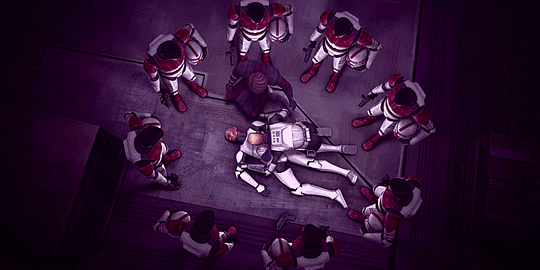
Event 5: Fives’ death
When Tup succumbs to a mysterious mental disorder that results in the death of a Jedi Master, Fives is determined to uncover the truth. His investigations lead him to discover a conspiracy regarding the inhibitor chip hidden in the brains of clone troopers. Nala Se claims that the chip is meant to restrain the clones from violent, unpredictable action. Fives does not believe her, and he manages to convince Jedi Master Shaak Ti to allow him to plead his case directly to Supreme Chancellor Palpatine on Coruscant. However, his plan falls apart when he is accused of attacking the Chancellor. Fives informs Anakin and Rex about the plot against the Jedi, in which the inhibitor chip in every clone will be used to force the clones to kill their Jedi Generals. However, Anakin and Rex struggle to believe in him. Fives is then shot and he dies in Rex’s arms. The archetypes evoke from this event are Hephaestus, Hestia and Persephone – which are Echo’s archetypes.
When Tup's results come back negative for a virus, Shaak Ti wants an atomic brain scan to be done on Tup. However, Nala Se want to terminate the clone and do an autopsy. Fives is determined to find out the truth and he needs AZI to perform an atomic-level brain scan on Tup. AZI tells Fives that he cannot do that because it is against Nala Se’s orders. Fives then informs AZI that as a medical droid, his duty of saving a patient's life overrides all orders. Fives’ reasoning manages to convince AZI and he does an atomic-level brain scan on Tup. This is how they discover a tumour in Tup’s brain, which later turns out to be an inhibitor chip. Fives’ ability to convince AZI to disregard Nala Se’s order shows that Fives knows the protocol of medical droids very well and can find loopholes to break the system, which is something Echo does as it is a trait of the Hephaestus archetype.
When Fives discovers from AZI that he is about to get his memory erased, he quickly escapes from the clone security guards. He puts on a disguise as he sneaks into Kamino’s Genetic Records Hall and then the embryo room to discover the truth. Right now, Fives takes on the Persephone archetype, disguising himself as a regular clone trooper to gain access to certain rooms, and even finding alternate routes to evade capture.
Even though the whole world is against him, Fives is determined to expose the truth about the inhibitor chip to Anakin and Rex. Right now, Fives takes on the Hestia archetype as he firmly believes that what he is doing is the right thing to do, even if he gets killed or that nobody believes in him. The morals "The truth about yourself is always the hardest to accept", "The wise benefit from a second opinion", "When in doubt, go to the source", and "The popular belief isn't always the correct one" are all associated with Hestia – the need to turn inward, seek the “Self” for advice, and stay firm in one’s values and beliefs. Fives is able to do all of these until he dies.
Due to the effects of the inhibitor chip, Tup is experiencing Order 66 as a “nightmarish mission” and he claims that he is free from it upon his death. It seems that upon activation, the inhibitor chip sends Tup into a dark place (or the Underworld), turning him insane and eventually claiming his life. When Fives digs deeper into the truth about the inhibitor chip, he ends up “descending into Underworld” as the conspiracy begins to haunt him. Fives is treated like a mad person when he tries to tell Anakin and Rex about the truth, as if he has slipped into psychosis – in which Persephone people are susceptible to. As Fives dies in Rex’s arms, he claims that his missions and nightmares are finally over – as if his soul now descends into the Underworld and resides there – just like what has happened to Echo.

Slipping into Depression
Fives’ death is the last straw for Rex. He tries to send a grievance report about Fives but upon realizing that the truth does not matter, he encrypts the report instead. His idealized viewpoint of the Republic has been shattered. The losses add up and now he slips into depression, feeling that his duty as a soldier is meaningless.
Rex means “king”, and now the king is wounded. In myths and legends, as long as the king’s wound remains unhealed, his kingdom will stay as a desert wasteland where nothing grows or thrives. The effect of Rex’s emotional wound can be seen during the Battle of Anaxes. Anaxes is one of the Republic's largest shipyards, and it is under attack from Separatist forces led by Admiral Trench. After weeks of heated battle and mounting losses, the Republic is losing its grip on Anaxes. The situation gets worse when the Separatists captures the main production facility for the Republic's battle fleet, impairing the generativity of the Republic forces. Captain Rex suspects that the battle droids are learning his strategy to the point that the Separatists can perform specific counterattacks. Commander Cody fears that the Republic could suffer more severe losses if the Separatists have figured out how to counter Rex, who is one the most talented officers the Republic has. Rex is suffering from a lack of creativity as he struggles to lead the Republic to victory.
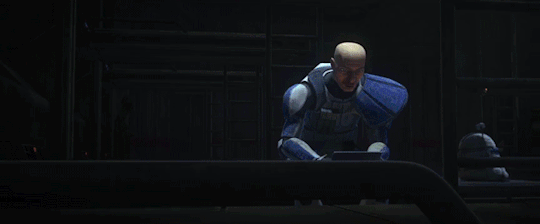
Moreover, Rex retreats in the barracks and stares at an old picture of him, Cody and the two ARC Troopers Echo and Fives. He laments their deaths and the losses suffered by the Republic forces. Rex views all of their sacrifices and loyalty mean nothing, and he is depressed. Although he has a feeling that Echo is alive, he does not want to tell the Jedi since they may think that he is crazy. Even Anakin notices that Rex has something else in his mind, but Rex refuses to say. He is isolating himself from others.
Cody is aware of Rex’s emotional wound and he understands how Rex feels. Cody calls in Clone Force 99, believing that their unique skills and their 100 percent success rate will be helpful for Rex in the Battle of Anaxes. I interpret this scene as a friend or a loved one introducing you to professional help.
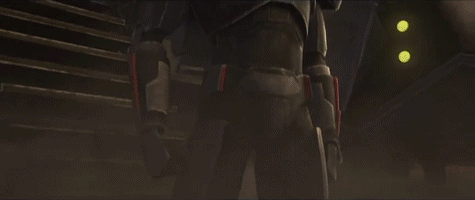
The Bad Batch Arc: Rex’s Healing Journey
At first, Rex is hesitant to meet Clone Force 99 because he has heard of their aggressive and unorthodox ways of completing their missions. However, as he embarks on a journey with them, he ends up appreciating them and viewing them as one of the finest soldiers he has ever met. I interpret the Bad Batch acting as guides or therapists to Rex, sending him on a path of individuation that will heal him.
The Geography of Rex’s Journey
Throughout the four-episodes arc, there are a few places that serve as a metaphor for the mind. Fort Anaxes, where the Jedi Generals and the clones discuss their plans, represents the conscious realm, where logic and willpower rule over. The wilderness of Anaxes represents the realm of emotions, instincts and memories – one part of the unconscious realm. Skako Minor represents the Underworld for Echo and Rex – the personal unconscious realm. Admiral Trench’s fleet above Anaxes represents another Underworld – the collective unconscious realm.
“The Bad Batch”: Remembering Oneself
Based on my interpretation, when Rex meets the Bad Batch, he is reminded of the events that have made him question everything: Tech reminds him of Slick’s betrayal; Hunter reminds him of Cut the clone deserter; Crosshair reminds him of the Umbara Arc; Wrecker reminds him of the time Ahsoka was framed and hunted down. Echo is not present because Fives’ death is a traumatic event that Rex has repressed it – just like Echo is trapped on Skako Minor.
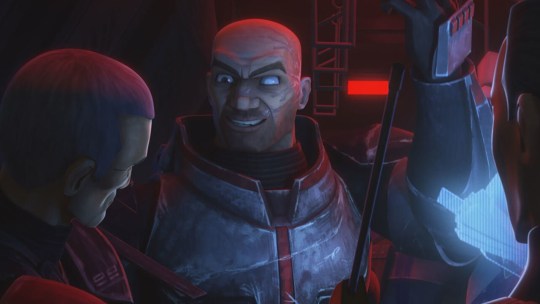
Wrecker, who has the Aphrodite archetype, helps to make the Bad Batch look less intimidating to Rex, Jesse and Kix. He is the first one to take off his helmet, creating an engaging and charming impression of the team. I imagine Wrecker being a therapist will involve getting you to meet new people for engagement, or getting you to do some creative work. In this four-episodes arc, Wrecker is helping Rex to engage with the Bad Batch, which allows him to expand his horizons and to see the Bad Batch as who they truly are.
As the clones depart for the Cyber Center, they have to travel through the wilderness of Anaxes because their gunship has been shot down by battle droids. They have to leave Fort Anaxes, which symbolizes leaving the conscious realm and entering the unconscious realm. Since the wilderness represents the realm of emotions, instincts and memories, this means that the Bad Batch’s aggressive tactics are more useful in battle. Moreover, this realm is associated with Poseidon, Artemis, Ares and Aphrodite because these archetypes are motivated by emotions. These archetypes are associated with Crosshair and Wrecker, and they play a major role in guiding Rex on this leg of journey. Hunter, who has the Dionysus archetype, is also associated with the wilderness, which allows him to bring the clones to the Cyber Center. Tech, who has the Hermes archetype, acts as a guide that helps the clones to move between realms.
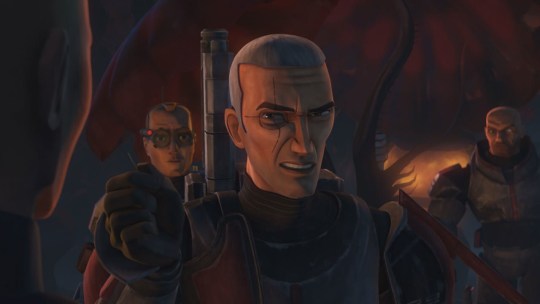
With Cody injured and unable to continue on, Rex decides to take charge of the mission. This leads Crosshair to point out why Cody has to call the Bad Batch in for this mission if Rex’s plans are so good. Crosshair has the Apollo archetype, which grants him the clear-sightedness to see through the blind spots that Rex is unaware of. Although Crosshair sounds rude to Rex, he is being blunt and brutally honest. In fact, Crosshair is helping Rex to recognize that something is wrong with him, which will enable him to start his healing process. I imagine Crosshair being a therapist will bluntly point out all your blind spots, so you can become aware of your problems and start healing.
Of course, being in the realm of emotions and instincts also means having a risk of being overwhelmed by those intense emotions. Soon enough, tension rises between Wrecker, Crosshair, Jesse and Kix, which almost escalates into a fight. Fortunately, Hunter, who has a Zeus archetype, is able to think above his emotions. He stops the fight and reminds everyone that they are all on the same side. He then lets Rex take charge of the mission.

Thanks to Crosshair’s Apollo archetype, Rex recognizes his lack of creativity has become a major problem for the Republic’s forces in the Battle of Anaxes. For healing to take place, Rex must encounter new experiences with the openness of a child and the ineptness of an amateur. Inspired by Wrecker’s Aphrodite archetype, Rex’s experiences with the Bad Batch help him to regain and improve his creative skills. When Rex plans to take over a Separatist outpost, he takes a page from the Bad Batch’s strategy, which helps the clones to quickly overwhelm the droids and capture its command and communication center. This aggressive strategy is also implemented in capturing the Cyber Center. These victories show that Rex is starting to “find his harmony and bliss” as he is now on the right path. He is expressing his gifts as an experienced clone captain in a manner that is consistent to his personal values – to help the people he cares about. He is “finding his own myth”. The moral "Embrace others for their differences, for that makes you whole" becomes important for Rex in his path to individuation. Only when he is able to embrace the Bad Batch for their differences can he achieve “wholeness of the Self”. This moral is prevalent throughout the four-episodes arc.
As Rex continues on his journey of self-discovery, he begins to delve deeper into his unconscious, where he finds “whomever” he has buried and split off from his conscious awareness and left in the past is still alive. This dismembered “whomever” is Echo. When the clones take over the Cyber Center, Tech hacks into the computer system and discovers Rex’s algorithm. Strangely, it is not stored inside the center's memory banks but is instead being broadcast from another planet called Skako Minor. Tech, who takes on Hermes the guide of souls, digs deeper and receives an audio signal which sounds like a human voice. He drops the voice masking and it turns out to be the voice of a clone trooper. The voice responds “CT-1409” repeatedly, and Rex realizes that it is Echo’s identification number, which means Echo is alive.
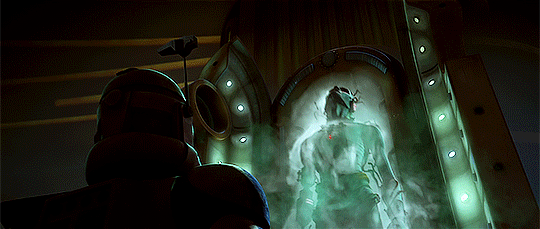
Rex is glad to know Echo is alive, but he feels guilty for leaving Echo for dead in the Citadel. The guilt he feels from that specific memory must have been repressed in his unconscious for so long. According to Jean Shinoda Bolen, whatever is dismembered and buried through repression is “buried alive”, so when it is uncovered, it exists as it was. Echo is currently trapped in a stasis chamber – as if he is “buried alive”. When Echo is released, he does not remember much and he does not know how he has gotten to Skako Minor. The memory that keeps repeating in his head is his last mission to the Citadel – a traumatic memory that is still fresh in his mind. As Rex is starting to uncover his feelings and remember who he once was, Echo’s voice calling out to him is like “whomever” is “buried alive” in Rex’s unconscious is begging to be “heard” and be “resurrected”. For Rex to heal himself, he must rescue Echo and “bring him back to life”.
Whatever is found in the unconscious must be brought into the consciousness to be known, this means Rex must the startling discovery that Echo is alive back to the Jedi Generals at Fort Anaxes. The clones are forced back into the Cyber Center as the heavy droid reinforcements begin to overwhelm them, which can serve as a metaphor of overwhelming emotions are starting to engulf Rex’s mind. This makes sense because Rex is so shocked to find that Echo is alive that he briefly ignores Hunter telling him they need to leave. Thankfully, Crosshair has secured a speeder craft and he is able to bring all the clones out of there. Right here, Crosshair is like Poseidon driving his golden chariot drawn by white horses over the waves, which stops the storms. His action of bringing the clones out of the Cyber Center can be interpreted as “bringing calmness and peace to them”. Besides the Poseidon archetype, Crosshair is also acting like Apollo, who has a connection to the distant realm of the Hyperboreans, as he brings the clones back to Fort Anaxes, which is a metaphor of the conscious mind (where Apollo resides).
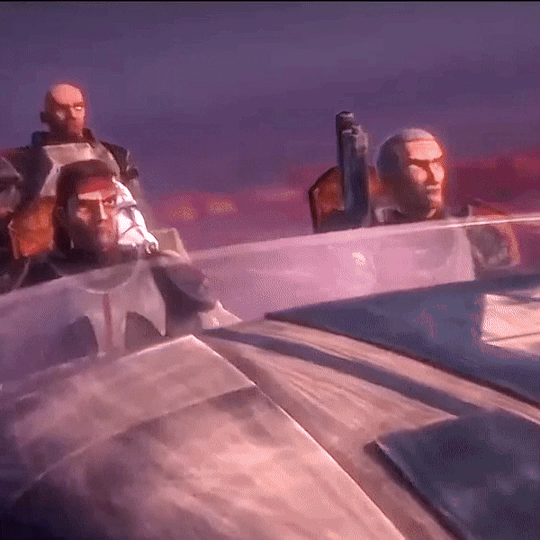
“A Distant Echo” and “On the Wings of Keeradaks”: Rescuing What was Lost
At Fort Anaxes, Anakin, Rex and Hunter are waiting for permission from the Jedi Council to embark on a rescue mission to Skako Minor in search of Echo. However, the Jedi Council denies the permission, which serves as a metaphor of the consciousness denying any access to the unconscious realm. This makes sense because we have been made to be afraid of our unconsciousness, where our repressed thoughts and feelings, traumatic memories, parts of us that we are ashamed of or being deemed as unacceptable, and untapped potentials reside. In a patriarchal society where its culture and identity align with Zeus and other sky gods (the consciousness), the unconsciousness (or the Underworld) is depicted as a fearful, hellish place rather than a source of riches (like Hades as Plouton or Pluto, the rich one).
Rex is insistent that if they are going to get permission, they should leave immediately. Even though they do not get the permission, they still proceed with the mission. At this moment, Rex is committed to follow his instincts and heart because he truly believes that Echo is alive. It takes courage to act upon what is true for you, no matter how risky it will be. By leaving the board road that has been travelled by others, which is being a good soldier that follows orders, Rex is living his own personal myth. This is also supported by a deleted scene where Obi-Wan points out to Rex that it is unusual for him to disregard authority.
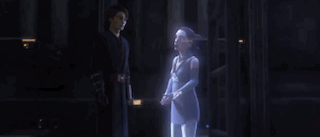
Anakin is worried that Rex is letting his personal feelings drive him too much on the rescue mission. Not knowing what to do, Anakin seeks out advise from his secret wife Padme Amidala, who serves as a metaphor of the anima, the unconscious feminine side of a man (which is devalued in the patriarchy). Carl Jung believes that a man’s anima affects his moods, emotional bonds, and how he perceives women. Anakin explains the situation to Padme, and she points out that Rex may have learned from Anakin to let his emotions be his motivator. She advises Anakin that he should support Rex's instincts on this mission, since Rex has always done the same for him. Anakin respects Padme’s wisdom, and he decides to proceed the mission even though Obi-Wan has come to report that the Jedi Council has denied permission to go forward with it.
It is worth noting that Echo has a Persephone archetype, which serves as the anima to all clone troopers. However, Echo is currently confined on Skako Minor, just like Persephone is trapped in the Underworld. In the Greek myth, winter comes when Persephone is in the Underworld. This myth serves as a metaphor for Rex’s current status – he is experiencing the lack of vitality as he is in his “winter” period. The anima can be described as “the soul” that brings vitality to a person’s life. For Rex to revitalize himself, he must bring Echo out of Skako Minor, which mirrors the myth where Hermes brings Persephone out of the Underworld and restores her to her mother Demeter.

Although Hunter thinks that Skako Minor could be a trap, he is willing to lead the Bad Batch to help Rex and Anakin, mainly to ensure that they will be able to leave safely if the mission goes wrong. Hunter, who has the Dionysus archetype, encourages Rex to disobey orders and continue on with the mission. After all, this journey to Skako Minor can help Rex to become a hero – breaking away from his designated role as a soldier of the Republic. I imagine Hunter being a therapist will encourage you to follow your heart and break free, even if that means going against expectations that weigh you down, or leaving behind your stale life. Furthermore, by accompanying Rex on this mission, Hunter (who has a Demeter archetype) has initiated Rex into the Eleusinian Mysteries, which were rituals that celebrated the return of Persephone (Demeter’s daughter) from the Underworld, leading to spring. This initiation into the Eleusinian Mysteries ensures Rex will have a safe return from Skako Minor.
Rex, Anakin and the Bad Batch head to Skako Minor, which serves as a metaphor of a voluntary descent into the Underworld – an essential part of a hero’s journey. Tech, who has the Hermes archetype, becomes the guide of souls and the rescuer of the child. Moreover, Tech has the Hades archetype, which means he is familiar with the Underworld, and he can help Rex to discover riches from this journey. As the guide of souls, Tech safely lands the Marauder on the planet’s surface. They encounter the native inhabitants called the Poletecs, who choose to cut away from the outside world for they do not want to be involved in the Clone Wars. They are like the inhabitants of the Underworld, separated from the outside world. Since the Poletecs only speak in their own language, Tech acts as Hermes the god of speech, and becomes a translator.
The Poletec chief leads Rex, Anakin and the Bad Batch to Wat Tambor’s city Purkoll (which contains many rooms and corridors like a maze – an imagery of the Underworld). During the journey, Tech loses Echo’s signal, leading almost everyone to fear that Echo is actually dead and the Separatists are using him to lure them into a trap. While Rex is confident that Echo is alive, Anakin advises him that they should be ready for a possibility that Echo is dead. Rex understands Anakin’s concerns, but he refuses to give up hope. Since Tech also does not believe that Echo is dead, it is possible that he is affirming Rex’s belief. This makes sense because Hermes is described as the “inner guide”, “inner voice” or “inner self-helper”. This archetype plays an important role in one’s individuation journey as it helps a person to dive deep into their unconscious mind and find the pieces of themselves to be brought back to light (or the conscious mind). Since Hermes is the rescuer of the child, this archetype is tasked to find what was personally repressed in a person, and to resurrect archetypes that have been culturally buried. I imagine Tech being a therapist will involve helping you to recover the parts of you that have been repressed or lost, so you can feel whole again and that your life has meaning once more.

The moral "The search for truth begins with belief" is taken up by Rex. He strongly believes that Echo is alive, which leads him to search for the truth. The search for truth is an essential part of the individuation journey for it leads a person to experience harmony and bliss as their actions begin to align with their personal values. Rex, who has lost so many of his brothers, finds hope when he discovers that Echo is alive, and he is not going to leave Echo behind (unlike that time in the Citadel). His determination to rescue Echo and keep holding onto hope eventually pay off when he and Tech manage to safely release Echo from the statis chamber and the computers.

However, Rex, Anakin, Echo and the Bad Batch are not out of the woods yet. They are now surrounded by battle droids and they cannot call for reinforcements because their mission is unsanctioned. Just like the heroes need to leave the Underworld and return to the living world, a person cannot stay too long in the unconscious mind or they may not return to reality (the conscious mind). The moral "Survival is one step on the path to living" is important to Rex, Anakin, Echo and the Bad Batch. They must survive Skako Minor (the Underworld) if they have any hope of returning to Anaxes (the living world).
Fortunately, Echo, who has the Hestia archetype, is able to spend his unchosen solitude to gain access to the Techno Union’s database while they are using his memories to counter the Republic’s forces. With that, Echo leads Rex, Anakin and the Bad Batch through an exhaust pipe above the chamber to escape. He also brings the team to a long narrow pipe that leads to a building with a landing pad as a means to escape. Echo’s ability to guide Rex, Anakin and the Bad Batch across Purkoll indicates that his Persephone archetype has transitioned from Kore (nameless maiden) to Queen of the Underworld. He becomes their guide to the Underworld for he is no longer afraid of this dark realm they are in.

As Rex, Anakin, Echo and the Bad Batch try to cross the pipe, they are trapped by D-wing droids on both sides. Crosshair loses his balance and nearly falls, but Wrecker pushes past his fear of heights to save him – which is a good sign because heroes have to face their fears in the Underworld, and they can leave the Underworld if they succeed. Tech takes on Hermes the alchemist as he uses a recording to summon several keeradaks, allowing all of them to escape. They return to the Poletec village they have encountered earlier in their journey. The Poletec chief is impressed that they have managed to tame the Keeradaks but is displeased that they have returned to his village, bringing the war with them. Rex apologizes for breaking their promise and he gives a speech denouncing the Techno Union. He even shows them the cybernetic prosthetics that the Techno Union have inflicted on Echo. Rex’s inspiring speech manages to convince the Poletecs to join forces with them to fend off the Separatists, which can be seen as a gift of Hermes (considering that Tech acts as a translator between both parties). Besides Hermes, Rex establishing an alliance with the Poletecs can be seen as a gift of Athena, which is one of Tech’s archetypes. It can be interpreted that Tech is helping Rex to heal and return as a great leader.
The clones, Anakin and the Poletecs successfully defeat the droid army, which means the heroes can now safely leave Skako Minor (or the Underworld). Rex tells Echo that when they get back it will be just like "old times", but Echo doubts it. After all, Echo has been turned into a cyborg and he has been tortured by the Separatists – his body and mind have gone through unspeakable horrors. Yet, his soul remains intact, and he holds a glint of hope for the future.
“Unfinished Business”: Integration and Homecoming
In ancient times, a traveller might visit the temple of a god or goddess to ask for help or to pay respects to the deity. On our life journey, we will encounter archetypes that take on various forms. As we enter the “temple” of a particular archetype, an unseen archetype is present too – which is Hestia. Hestia is the Goddess of the Hearth and Temple. She was the fire at the centre of a round hearth – resembling an image of a mandala that symbolizes the archetype of the Self, which Carl Jung described as the centre of our personality that brings wholeness and meaning. When you are doing something that gives you a sense of meaning, in which you feel a deep connection to who you really are, an archetype will be activated in you, and it will relate to the Self. This helps you to live an authentic life because you are consciously aware of your relationships to one or more activated archetypes, and yet, you feel centered like Hestia, who provides clarity and certainty that there is a sacred dimension in your life.
Echo is now brought back to Fort Anaxes, where he undergoes healing. His return serves as a metaphor of whatever is from the unconscious has been brought into the light or the consciousness. Since anything from the unconscious has been made to be supressed, it is natural for the conscious mind to be wary of their presence in the consciousness. However, healing can only take place when the conscious and the unconscious are integrated. Due to Echo’s horrifying experiences in the hands of the Separatists, it is natural to have lingering questions of his true loyalty and uncertain future. The Bad Batch, or more specifically, Hunter and Tech, do not trust Echo. However, Rex has known Echo for a long time, and he can see that Echo’s spirit remains intact despite the horrific experiences. Hence, Rex trusts Echo, which serves as a metaphor for a person to trust their unconscious mind, believing that it does care for their wellbeing.
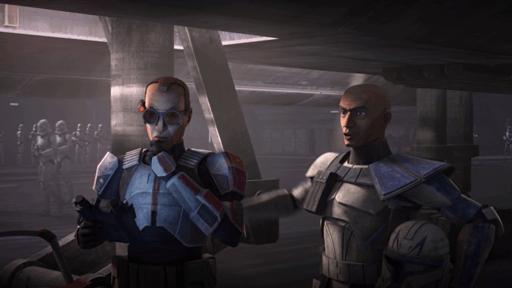
In Jungian psychology, it is believed that self-sabotage is a result of your unconscious trying to inform your consciousness that what you really need is not what you think. For example, perhaps you are saving money to buy a place far away from everyone so you can live in solitude, but every time you want to purchase a house, you find that you have self-sabotaged your plans. This may be a sign that your unconscious mind is telling you that you actually yearn to have connection with people. If you want to stop the self-sabotage, you must stand in between your consciousness and your unconscious – taking on the archetype of the Self. You must understand why your unconscious or Shadow is doing this to you, while not letting it consume you (with your consciousness or Ego acting as a guard). By integrating your consciousness and your unconscious, you can set out a solution that is personally satisfying for all parts of you, which by referring to the above example, it would be to buy a house that surrounds you with nature (the desire for solitude) but still provides a short distance for you to connect with other people (the desire for connection).
The moral "Trust placed in another is trust earned" is taken by Rex. Echo has earned Rex’s trust through his work, dedication and integrity back when he was on the 501st. Hence, Rex places his trust on Echo, believing that his fellow brother can secure a Republic victory on the Battle of Anaxes even though he has not fully recovered yet. Echo, who has the Hephaestus archetype, channels his pain and trauma into helping the Republic to win against the Separatists. Echo is aware that the Republic’s production of battle fleets has been wounded by the Separatists, just like how the Separatists have wounded him. Just like Hephaestus the crippled craftsman, Echo is motivated to do the right thing, because if he can help the Republic to reclaim Anaxes and get the production facilities running again, then he can heal himself too.

Rex, Anakin, Echo and the Bad Batch depart Anaxes and fly to the Separatist fleet, it serves as a metaphor for them entering the Underworld. Skako Minor is the personal Underworld, while Admiral Trench’s fleet above Anaxes is the collective Underworld. Taking on the Hermes archetype, Echo is able to trick the battle droids to allow them to dock with the Separatist dreadnought, where Admiral Trench is located. Once the heroes board the main ship, they infiltrate the dreadnought's interface unit. Unaware of the recent events on Skako Minor, Admiral Trench orders his tactical droid to contact Skako Minor for Echo's algorithm. Echo plugs into the interface unit just in time when the tactical droid makes contact on Skako Minor. Admiral Trench is currently above Anaxes, as if he rules over the sky domain, which represents the consciousness. He gets the algorithm from Skako Minor, which represents the unconscious. The interface unit where Echo plugs into is a round shape, resembling the round hearth of Hestia. Right now, Echo is taking on the Hestia archetype, representing the Self that stands in between Admiral Trench’s fleet (the consciousness) and Skako Minor (the unconscious). Echo tricks the Admiral to mobilize all troops to the assembly plant and then he issues a feedback pulse that shuts down all of the Separatist droids, leading the Republic to victory.
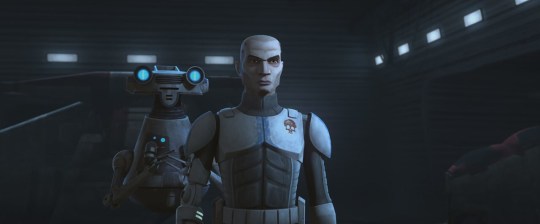
To connect with the Self and hold onto one’s centre, one must learn not to succumb to the intellectual and emotional forces, just like the myth where Hestia resisted the advances from Apollo and Poseidon, and took an oath of eternal chastity. For Echo, he faces Rex dissuading him from joining the battle due to his poor physical condition, the distrust from Hunter and Tech, and the trauma caused by the Techno Union. However, he is not affected by these things as he seeks to uphold his personal value to help others, keeping his centre intact. I imagine Echo being a therapist will encourage you to discover your personal values and act upon them, for you will find personal satisfaction, wholeness and meaning in life.
Admiral Trench and Anakin Skywalker are examples of how one can stray away from the Hestia archetype. Admiral Trench is arrogant as he trusts too much on the algorithm to lead him to victory. He leans too much on the intellectual forces, which are represented by Apollo. His overconfidence leads to his downfall when he does not expect the algorithm to fail. Unwilling to admit defeat, he activates a bomb in the assembly plant's fusion generator, which will blow up most of the planet and lead to many deaths. On the other hand, Anakin Skywalker confronts Admiral Trench and demands the final number in the sequence to disarm the bomb. Admiral Trench taunts Anakin, thinking that he won’t hurt or kill him because the Jedi are noble, in which the Admiral views it as a weakness. Anakin responds by severing the Admiral’s left set of arms, and claims that he has no such weakness like nobility. Anakin’s actions by emotionally driven, and it gets to the point of disregarding the values of the Jedi. The emotional forces, represented by Poseidon, has overtaken Anakin.
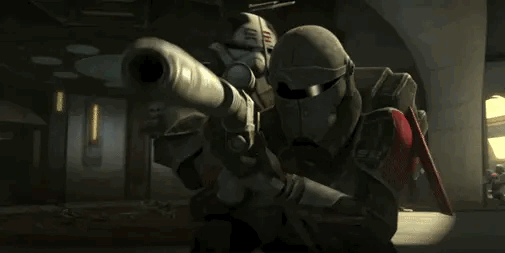
Wrecker and Crosshair are examples of how one can stay true to themselves while doing their job. Wrecker takes on the Ares archetype as he charges at the droids and manages to rip them into pieces. Wrecker is more emotionally inclined and this is evident in his cheering and shouts as he takes down the droids. He feels true to himself in that battle – as if Hestia is present with his Ares archetype. As for Crosshair, he takes on the Apollo archetype as he places reflecting mirrors on the wall to make a perfect trickshot to mow down a platoon of battle droids. Crosshair is more intellectually inclined with his sharpshooting expertise. He feels true to himself when he pulls off the trickshot perfectly – as if Hestia is present with his Apollo archetype.
Having accomplished the mission, Rex, Anakin, Echo and the Bad Batch leave on the Marauder. Anakin gives Wrecker a remote detonator to blow up Admiral Trench’s fleet. The colourful explosions may be a symbolism of wholeness, which is the end goal of this journey of individuation. No matter how far this journey has been taken, every traveller looks forward to an eventual homecoming. Back in Ancient Greece, home was made sacred by Hestia’s presence in the fire at the centre of the round hearth. The fire was lit up to welcome a returning family member or a newborn. This ritual of acknowledgment and welcome—of homecoming—consciously recognizes new life as part of the whole. In psychological terms, “home” is where we connect with a spiritual centre – a sacred place of homecoming due to Hestia’s presence.
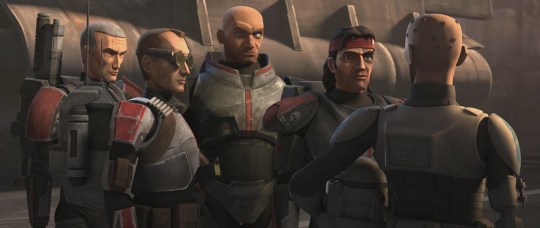
Upon returning to Anaxes, Rex, Echo and the Bad Batch are praised for their courage and skills. The Jedi also tell the clones that they will be awarded with medals on the ceremony. However, the Bad Batch does not want to attend the ceremony because recognition and achievements are not their thing. In fact, they just enjoy the thrill of the adventure and they just want to help people. Hunter sees that Echo has a different path like theirs, and offers him to join the Bad Batch if he does not feel like he fits in with the regular clones anymore. Rex acknowledges the Bad Batch’s individuality, and Echo’s too. Rex encourages Echo to go with the Bad Batch because he respects his individuality. With that, the fire at the centre of the round hearth has been lit, indicating a homecoming. For Rex, his homecoming is Echo’s return. For Echo, his homecoming is being welcomed into the Bad Batch. As Rex turns around, he sees Echo and the Bad Batch salute, which serves as a metaphor of Rex finally achieving “wholeness” with all archetypes finally integrated into one. Now, Rex finally sees himself resembling the five members of the Bad Batch – a great leader like Hunter, a creative strategist like Tech, a passionate fighter like Wrecker, a loyal brother like Crosshair, and a wise sage like Echo.
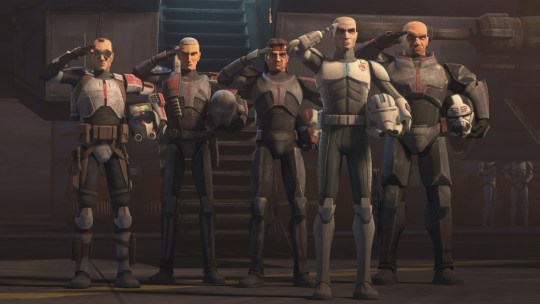
Surviving Order 66
Thanks to the Bad Batch, Rex returns to who he really is, while breaking free from his identity as “just a soldier of the Republic”. He regains his vitality and creativity. He continues to uphold his personal values like loyalty, brotherhood and justice. Since Rex has gone through the individuation journey, he is able to survive Order 66. When the inhibitor chip gets activated, Rex is able to resist its effect for a few seconds. He warns Ahsoka to stay back and tells her to "find him… Fives… find him!" Rex is able to briefly remember who he is before losing the fight to the inhibitor chip.
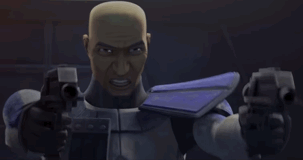
Ahsoka has gone through the same individuation journey as Rex. She starts off as a bright Padawan of Anakin Skywalker, but she eventually comes to realize that the Republic and the Jedi Council do not care about her. She then leaves the Jedi Order to follow her own path. Although she no longer identifies as a Jedi, she continues to uphold the values of a Jedi – an indication that she has returned to who she really is, while breaking free from her identity as a Jedi. Rex is probably confident that Ahsoka will find a way to help him, which explains why he tells her to “find Fives”.
With the help of the astromechs, Ahsoka is able to retrieve files regarding Fives, Tup, the inhibitor chip and Rex’s encrypted grievance report. This serves as a metaphor of Ahsoka seeking answers in the Underworld, which are brought into the light. Then, Ahsoka and the droids manage to knock Rex out. Ahsoka then brings Rex to the medical bay. The medical droid does a scan on Rex but it finds no anomaly. Ahsoka puts her hands on Rex's head and recites the Guardian's Mantra: "I am one with the Force and the Force is with me," with the unconscious Rex joining in. The Guardian’s Mantra evokes the Hestia archetype as the Self is what we experience inwardly when we feel a relationship to oneness that connects us to the essence of everything outside of us – where “connecting” and “detachment” are paradoxically the same. Basically, to be connected with the Force is to be connected with the Self. By connecting with Hestia, Ahsoka is able to detect the inhibitor chip inside Rex’s head. A surgery is performed to remove it, finally freeing Rex from its brainwashing effects. Since Rex and Ahsoka have gone through their individuation journeys, they are able to avoid the fates that befall on the Jedi and the clones – death and the loss of identity. They have indeed broken free from their designated roles, and they are free to live out their personal myths.

Conclusion
What seems to be a fun Clone wars arc turns out to be a story about the individuation journey, which is significant to our lives. The Bad Batch, which consists of Hunter, Tech, Wrecker and Crosshair, are born to be different. They never feel that they belong with the mainstream society, so they shape their own identities. They follow their heart, which is how they find harmony and bliss. They choose to live out their personal myths, and become guides to Rex during his lowest moment in life. Echo joining the Bad Batch adds a few more archetypes into the group, and connects them with the regular clone troopers. Later, Omega becomes part of the Bad Batch, and I imagine Omega being a therapist will teach you to be kind to yourself.
So, whenever you feel that your life has become dull and meaningless, or that you do not know where you are heading with your life, remember to have courage to take on the individuation journey. You are not alone on this journey, and I hope that one day, you will find wholeness, harmony and bliss – where you can be true to yourself.
#star wars#the bad batch#tbb#star wars the bad batch#sw the bad batch#sw tbb#the bad batch analysis#tbb analysis#archetypal psychology#archetypes#the bad batch meta#tbb meta#gods in everyman#goddesses in everywoman#star wars clone wars#star wars the clone wars#sw the clone wars#sw clone wars#the clone wars#clone wars#star wars tcw#sw tcw#captain rex#clone force 99#Youtube
21 notes
·
View notes
Photo

Goddess Archetypes
Jennifer and Roger Woolger, The Goddess Within: A Guide to the Eternal Myths that Shape Women’s Lives
525 notes
·
View notes
Text
Artemis + 🐻
"The life cycle of bears and their behaviours and similarities with man were studied in ancient times by Aristotle, Theophrastus, and Pliny. However, archaeological evidence for the image of a bear as mother goes back to the Neolithic period. This Neolithic image portrays the 'notable tenderness of the mother beast for her cub as an image for human mothering.'
Baring and Cashford suggest that the bear is 'probably the oldest sacred animal of all.' These images are linked to the Brauron initiations into womanhood and motherhood, as well as the suggestion that Artemis is a derivative of an ancient bear goddess.
The authors note that the bear is 'the oldest animal hunted for food in the northern hemisphere, and also the oldest animal whose remains have been given a ritual significance.' This complex imagery of the bear as caregiver, but also as a large violent animal, is in many ways an anthropomorphic representation of the goddess herself.
Under her care, young women are protected in the transition from child to adult; however, there is also an animalistic character to this ritual. In order to be transformed from girl to woman, the young girl must shed the uninhibitedness of her childhood and offer it as sacrifice to Artemis.
This is a ritual of 'wildness.' When girls who were coming of age were seen as being especially 'hormonal', they were said to be in the grip of the wild, independent goddess herself. By performing these rituals, it was believed that the goddess would guide the girls to maturity.
During rites of initiation, young girls become the bears of Artemis. One example is the archeological find at Sparta, where an interesting lead figure from the sanctuary of Artemis shows a female dancer wearing a bear mask.
The ancient Greeks saw bears everywhere, especially in the stars, and attributed the characteristics of the mother bear to Artemis, both as the creature and as the stellar constellation of Ursa Major, 'the Great Bear'."
- She Who Hunts: Artemis: The Goddess Who Changed the World by Carla Ionescu
#artemis#artemis deity#goddess artemis#artemis devotion#artemis devotee#bear worship#bear archetype#hellenic polytheism#hellenic pantheon#hellenic gods#hellenic community#hellenic pagan#hellenic paganism#hellenic polytheist#hellenic worship
64 notes
·
View notes
Text

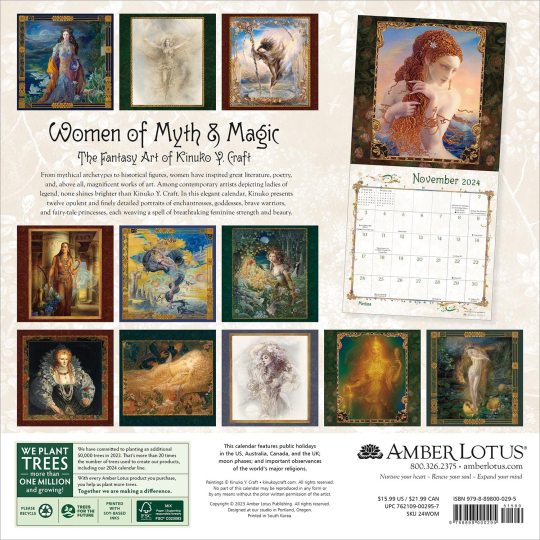
Women of Myth & Magic 2024 Fantasy Art
https://amzn.to/45Mwwv7
33 notes
·
View notes
Text
Stately, regal, beautiful Hera, whom the Romans knew as Juno, was Goddess of Marriage. She was the consort of Zeus (Jupiter), the supreme god of the Olympians, who ruled over the heavens and earth. Her name is thought to mean "Great Lady," the feminine form of the greek word hero. Greek poets referred her to as "cow-eyed"—to compliment her large and beautiful eyes. Her symbols were the cow, the Milky Way, the lily, and the peacock's iridescent tailfeather "eyes" that symbolized Hera's watchfulness. The sacred cow was an image long associated with the Great Mother Goddesses as provider of nourishment, while the Milky Way—our galaxy, from the Greek gala, “mother's milk”—reflects the belief, predating the Olympian deities, that the Milky Way came from the breasts of the Great Goddess as Queen of Heaven. This then became part of Hera's mythology: when milk spurted from her breasts, the Milky Way was formed. The drops that fell on the ground became lilies, flowers symbolizing another pre-Hellenic belief in the self-fertilizing power of the female genitals. Hera's symbols (and her conflicts with Zeus) reflect the power she once held as a Great Goddess whose worship preceded Zeus. In Greek mythology, Hera had two contrasting aspects: she was solemnly revered and worshipped in rituals as a powerful goddess of marriage, and was denigrated by Homer as a vindictive, quarrelsome, jealous shrew.
-Jean Shinoda Bolen, Goddesses in Everywoman
35 notes
·
View notes
Text
Mythic Symbolism in the Mayfair Witches
a mythic and psychoanalytical thread exploring themes of: alchemy, star lovers, fairytales, greek myth, three fold goddesses, and beastly grooms within the amc series ‘anne rice’s mayfair witches’
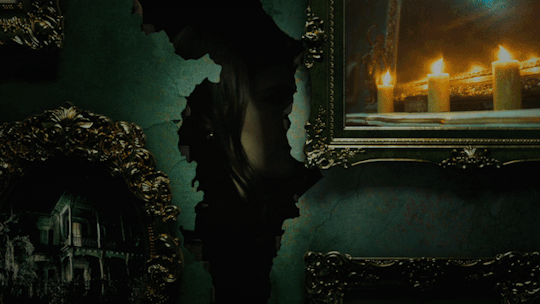
*disclaimer*
This post will be split up into multiple parts as it is very lengthy.
The point of this post is not to discuss how the show adapts the source material, but instead how the show stands on its own, utilizing psychological and mythic motifs in its plot and character journeys.
For those who want to see the show, it is available on physical DVD and Blue-Ray as well as streaming. The entire eight episode first season is available on AMC+ which you can get a free trial for through Prime Video channels.
A second season has also already been green-lit. However the first season ends on what I would consider a very satisfying note.
Part One, Part Two
————————————————————————
THE TRIPLE GODDESS: MAIDEN, MOTHER, CRONE
Aside from Rowan’s story, there are two other Mayfair women whose lives we follow. The progenitor Suzanne in the 17th century, and Rowan’s biological mother Deirdre. While together they each represent one of the goddesses, we also see each of them move through these roles in their own journeys.

The concept of the triple goddess also has strong roots in the myth of the Greek Fates and the Norns of Norse myth. Both represent the Birth/Life/Death cycle. This archetype is also strongly associated with Persephone, Demeter and Hecate, or Artemis, Selene, and Hecate.
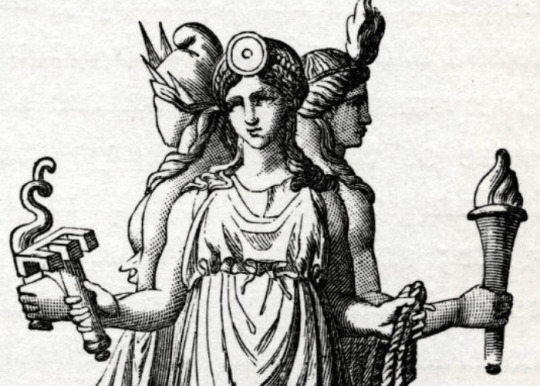
Each of these Mayfair women has a role directly associated with life and death. For example, Suzanne is a midwife whose work, like her aunt says, is not just curing people but also helping give them a good death.
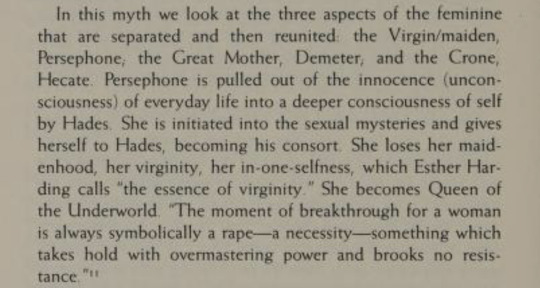
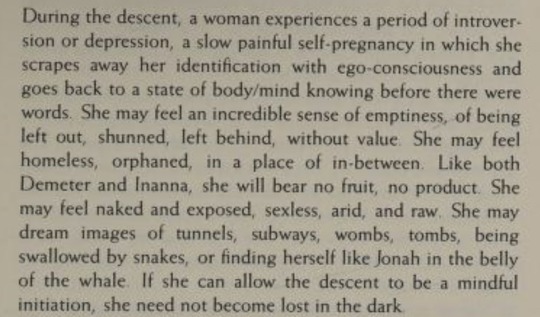
Rowan, like Persephone as Maureen Murdock puts it, is pulled out of the innocence of everyday life into a deeper consciousness of self by Hades. Or in this case Lasher.
Furthermore, Deirdre like Demeter is overcome with grief and surrenders to her sorrow, when her daughter is taken from her. However in this instance her daughter is taken away by Carlotta.

Suzanne is like Hecate as Jean Shinoda Bolen describes, a guiding companion force. When Rowan meets a crossroads in her journey at the Witching Hour, Suzanne is there to guide her as the first matriarch, as a mistress of life and death.
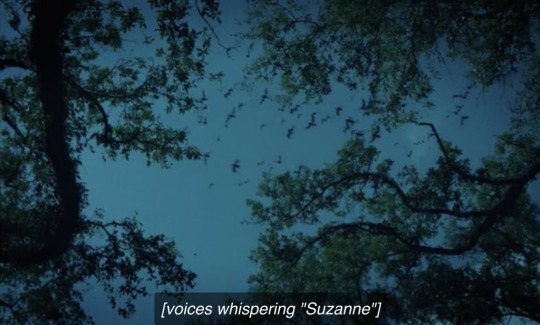
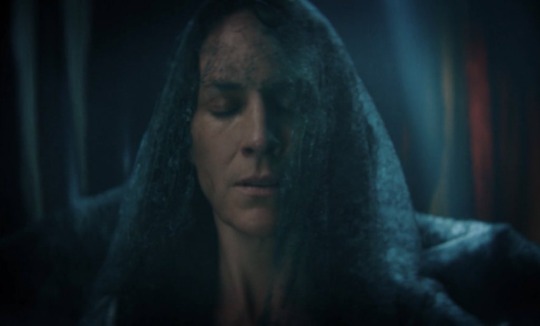
They each have mirroring moments in their journeys. Just like Rowan, Suzanne too was visited by a murder of crows, and the Dark Night of the Soul that Rowan is facing is likened in dialogue to the dark subconscious place Deirdre is trapped. In fact, episode two is titled The Dark Place.
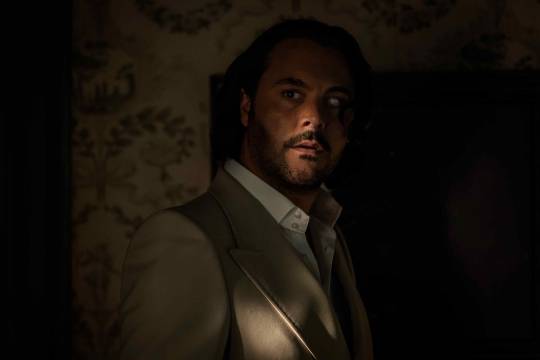

Each of them share the same animus. A being known as Lasher. He is bonded to each of the “Designees”, the matriarchs of the Mayfair family. We’ll delve into him soon enough.
DREAMS AND THE SUBCONSCIOUS
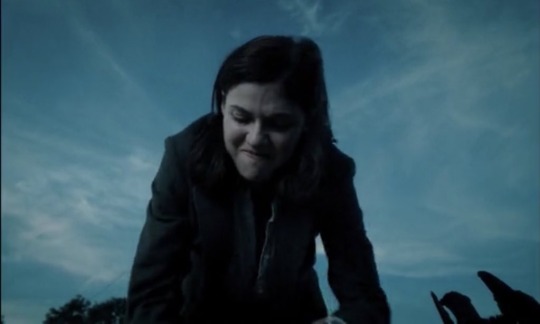
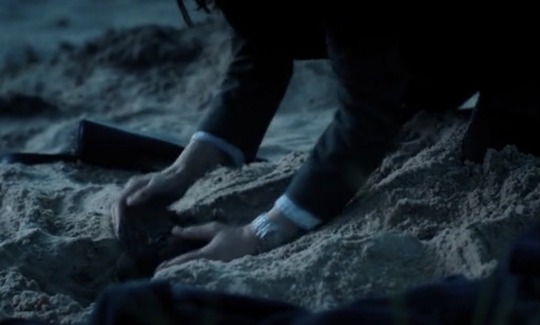
When Rowan uses her powers on the crows, causing a couple of them to fall down dead, she lays them down in her jacket, and drives off to a beach. She then walks to the shore and digs into the sand until she has a hole she can bury the crows in.
After this she takes a pill to force herself to sleep, both exhausted and desperate to flee into oblivion to escape her consciousness as it begins to recognize her shadow. But now as she is laying by the ocean, she is submerged in the unconscious.

She experiences a dream that evokes Cinderella, fairy godmothers, transformation, and spiritual death. She is wearing a shimmering blue gown, and is chasing after Ellie who is leading her somewhere. She runs after her mother, who leads her to The Mayfair House.
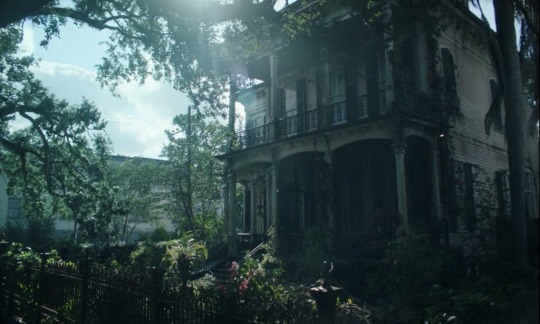
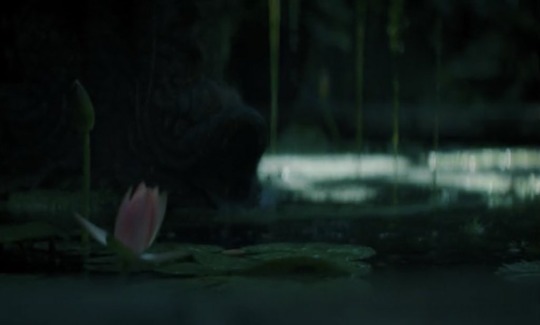
Whenever we see the house, it’s presented as a piece of nature itself, overgrown, hidden among trees, and the sound of water. It is a true representation of the subconscious, the underworld.
A FALSE START AND CLEANSING FIRE
When she finally goes to New Orleans, we think she’s going to get the answers she needs and reconnect with the feminine. However forces intervene and Rowan’s first impression of her Mayfair lineage and the power she possesses is one of fear, in part thanks to Ciprien Grieve. He means well, but his actions and perspective are a literal extension of Ellie as the “too good mother”.
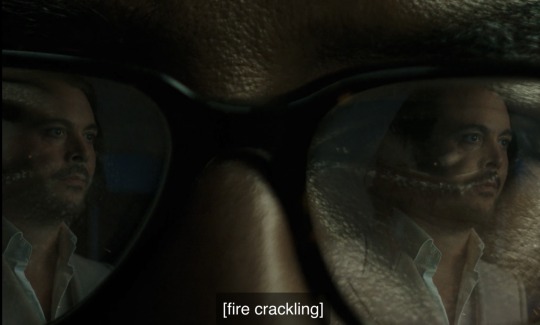
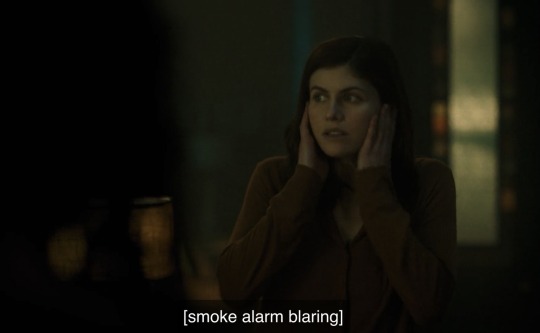
The organization called the Talamasca that Ciprien is part of, actually puts a spell around his building where Rowan is staying. Which acts as a wall or barrier keeping Rowan separated from her Shadow. It was made to keep Lasher out. This is when we have that cleansing flame, as Lasher sets a fire to get the alarms to go off and Rowan to leave the building.
And the first thing she intends to do, is find the Mayfair House which as we know is her subconscious…
End of Part Two
#heroines journey#alchemy#jung’s shadow#jungian archetypes#greek mythology#mythology#folklore#fairytales#mayfair witches#rowan mayfair#rowan x lasher#mythic romance#alchemical marriage#maureen murdock#anne rice#myth and legend#triple goddess#persephone#demeter#hecate#cinderella
20 notes
·
View notes
Text

10 notes
·
View notes
Text
nahida is quite literally a digital angel
#easy to forget when not actively playing the game but so much of her kit + design revolves around the digital#its a really cute approach to the archetypal goddess of nature/wisdom#genshin being historical fantasy meant they couldnt take her digitization very far but I see the vision#shes jsut a little thing and She is in your computer.#in another life she would have been a vocaloid#. to me
15 notes
·
View notes
Text
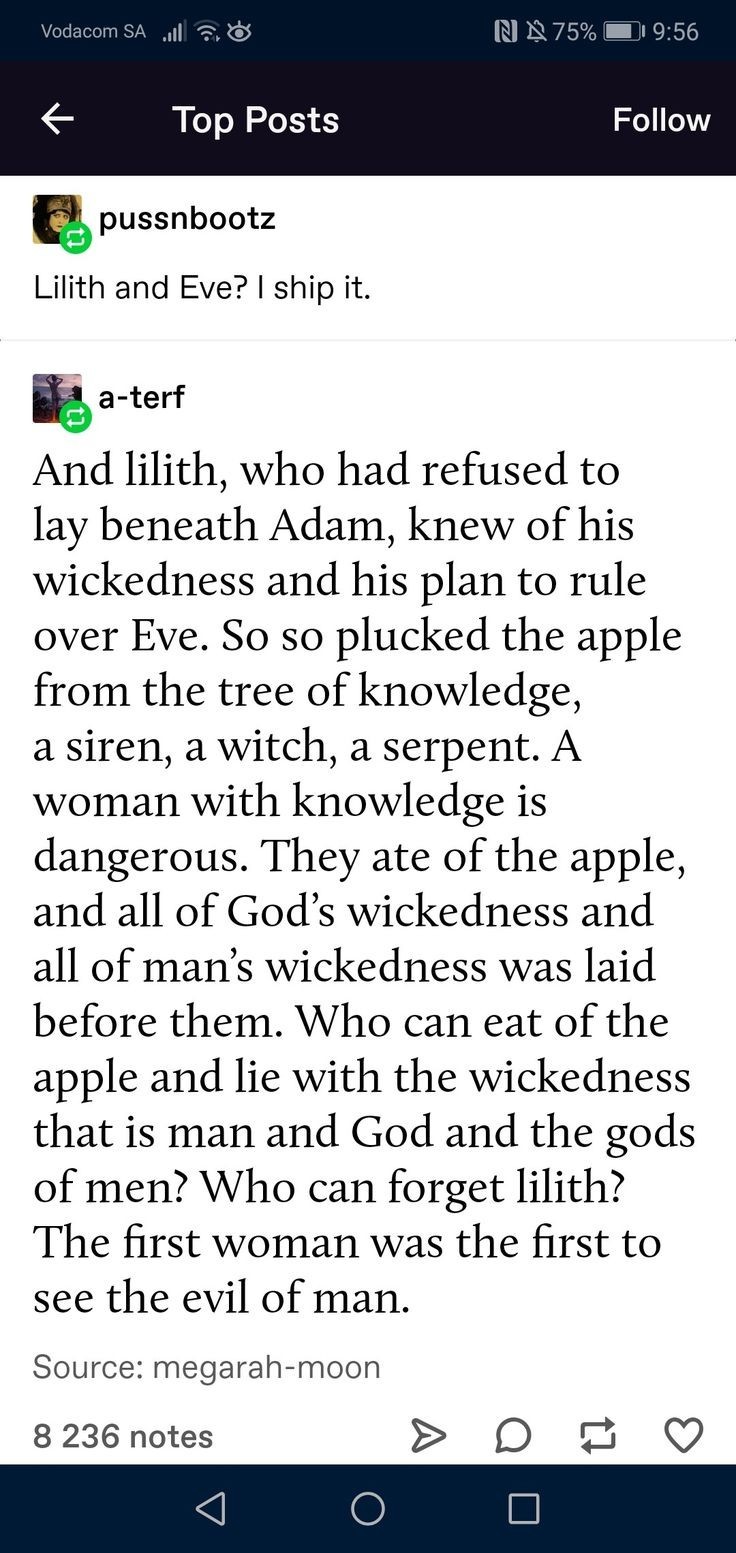


#LILITH Archetype#lilith#goddess LILITH#goddess energy#initiation#mother goddess#pluto placements#8th house#the great cosmic mother
41 notes
·
View notes
Text
Crosshair's Anima
This is the third part of the character analysis for Crosshair. You can read part 1 and part 2 here. I will be referring to “Goddesses in Everywoman” by Jean Shinoda Bolen for this analysis.
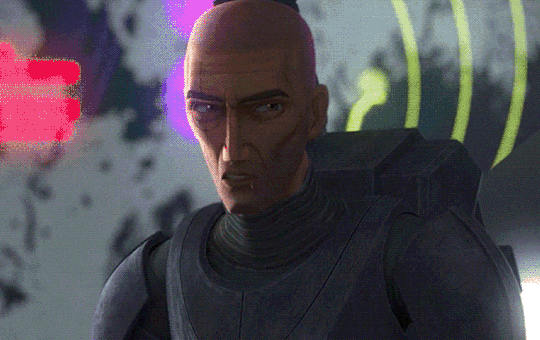
Crosshair’s anima consists of multiple archetypes, but the most prominent ones are Artemis and Hera. Artemis, or Diana as the Romans called her, is the Goddess of the Hunt and the Moon. She is the first-born twin sister of Apollo, the God of the Sun. As the Goddess of the Hunt, she wields a silver bow and carries a quiver of arrows on her back. She roams the wilderness of forest, mountain, meadow and glade with her band of nymphs and hunting dogs. As the Goddess of the Moon, she acts as a light-bearer, carrying torches in her hands or with the moon and stars surrounding her head. She is also the Goddess of Wildlife and she is associated with many undomesticated animals like the stag, doe, hare, quail, lioness, boar, bear and horse.

Artemis is a virgin goddess and she is the personification of an independent feminine spirit. She feels whole without a partner, and she has the “I can take care of myself” attitude. This archetype enables one to pursue interests and work that matters to them without needing other people’s approval. Their identity and sense of worth are based on who they are and what they do, rather than their relationships with others. Although Crosshair is part of the Bad Batch, he is capable of doing his own work while separated from them. In “The Bad Batch”, when the Bad Batch, Rex and Jesse infiltrate the Cyber Center, Crosshair positions himself from a distance, and he goes to secure a speeder craft as their getaway vehicle. In “A Distant Echo”, when Anakin tells the Bad Batch and Rex to split up so they can find Echo easier, Crosshair chooses to separate from his team and follow Anakin. With the rise of the Empire, Crosshair remains capable of carrying out the orders given to him even though the Bad Batch refuses to do so. He strongly identifies himself as a soldier of the Empire, claiming that this is who he is in “Return to Kamino”. He is certain of his identity even without the influence of the inhibitor chip and without the approval of the Bad Batch.

As the Goddess of the Hunt, Artemis is an archer that has the ability to aim for any target and know that her arrows will reach its marks. This archetype gives one the ability to concentrate intensely on whatever it is important to them, and to be undistracted from their course, which is called “focused consciousness”. The needs of others or competition would not deter them. In fact, competition only heightens the excitement of “the chase”. Not even obstacles or the difficulty in achieving the goal can hinder their perseverance. Since Artemis is more aligned to her instincts, her arrows are charged up with emotions. Hence, when a person channels their passion and intense emotions into pursuing a goal, their focus can be so intense that it becomes incredibly precise or destructive. Crosshair channels his intense emotions through his sharpshooting skills. His focus is so intense that every shot he makes is a precise killshot. However, in “Aftermath”, the shot Crosshair makes towards Wrecker only injures him. This may be a sign that he is fighting the effects of the inhibitor chip, and that he never intends to kill his brothers despite they have been branded as traitors to the Empire.
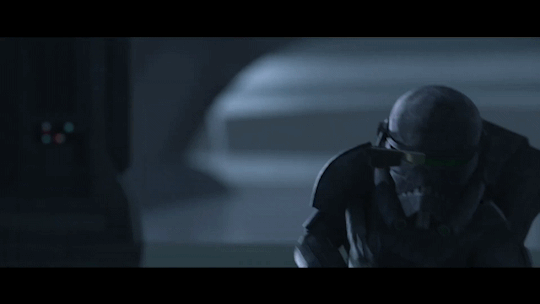
Artemis is seen as the archetype of the women’s movement because she is competent and independent, and she is protective of women and children. Since Artemis goes hunting and exploring the wilderness with her band of nymphs and minor deities associated with mountains, woods and streams, Artemis is also seen as the “big sister” archetype who emphasizes the “sisterhood” of women. In the myths, Artemis helped her mother Leto during her prolonged childbirth, and saved her from the giant Tityus who tried to overtake her. Artemis also came to other women’s aid, for example, she rescued the woodland nymph Arethusa from the pursuit of a river deity. Artemis is also known for her mercilessness, which is evident when she punished the hunter Actaeon who accidentally saw the goddess and her nymphs bathing in a hidden pool.

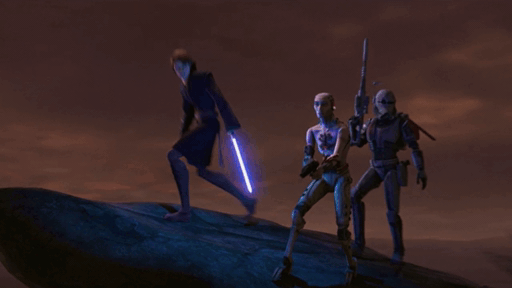
Crosshair is very protective of his brothers. In the Hyperspace Stories #10, when Dr. Krail appears as a hologram to greet the Bad Batch and state that he has been anticipating their arrival, Crosshair stands in front of Wrecker to protect him. In the episode “On the Wings of Keeradaks”, Crosshair protects the Poletecs by taking down the battle droids from afar. He also cares about Echo’s wellbeing as he is seen placing a hand on Echo’s shoulder after they fight off the battle droids. There are many headcanons and fanfictions that depict Crosshair protecting the vulnerable such as rescuing a person from another’s unwanted advances, which sometimes leads to a physical altercation. If Crosshair is not affected by the inhibitor chip, he will be impressed by Omega’s bravery for standing up for the Bad Batch in “Aftermath”.
People who feel true to themselves being with nature is connected to Artemis because she is associated with the wilderness and undomesticated nature. They may feel like they are in a spiritual communion with nature – be it surrounded by forests, mountains, or under the starry night. As the Goddess of the Moon and the Hunt, Artemis grants “moonlight vision”, which helps a person to look inward (like going into the wilderness, which contains our dreams, experiences and connection with nature) and be more reflective. There are headcanons that depict Crosshair as an animal lover, especially towards baby animals, which is an Artemis trait. In “Kamino Lost”, Crosshair is shown to have “moonlight vision” when he successfully takes the shot to save Omega despite the dark surroundings and the murky waters below. In “The Outpost”, Crosshair makes a spiritual connection with the Ice Vulture, which helps him to look inward and reflect on his decisions, leading him to turn against the Empire.
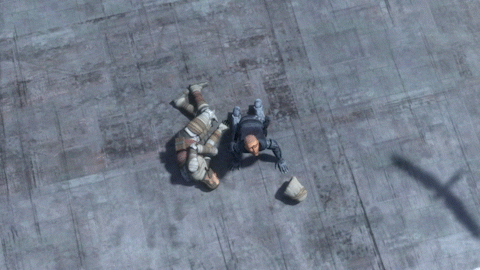
In Greek mythology, three goddesses make up the moon trinity – Selene who rules over the sky, Artemis on earth, and Hecate in the Underworld. This moon trinity can be represented by Riyo Chuchi, Crosshair and Echo in terms of their fight against the Empire: Riyo Chuchi is Selene because she is a senator and her high status means she is at the sky domain (the Galactic Senate); Crosshair is Artemis because his rebellion starts in the wilderness of Barton IV; Echo is Hecate (who is a constant companion to Persephone, Echo’s anima) because he fights in the darkness and at the crossroads where he rescues Howzer and two of his men.
Zeus and Leto are parents to Artemis, who are both loving and approving of her course of life. Parental support is needed to cultivate the Artemis archetype from a young age. Opposition and disapproval from parents (mostly from the father) may damage the self-esteem and self-confidence of an Artemis person. They may continue to put on a defiant attitude, but deep down, they feel inadequate despite all the successes they have, and they have a tendency to self-sabotage. Conflict usually arises between the mother and the daughter, especially if the mother is a Demeter archetype. A Demeter mother prefers a compliant good girl like Persephone, who will follow her, ask for her help, and accept that “mother knows best”. However, Artemis is the opposite to Persephone for she is independent and stubborn, which can lead to disappointment and feelings of rejection within the Demeter mother.

The conflict between Demeter and Artemis can be seen between Hunter and Crosshair. Hunter has the Zeus and Demeter archetypes. As Zeus, Hunter recognizes Crosshair’s talent and encourages him to develop it further. Though, his Demeter anima likely causes Hunter to limit Crosshair and stop him from doing certain things. Nevertheless, Crosshair’s stubbornness will get in the way, leading to arguments between the two. In “Aftermath”, Crosshair keeps shooting at Caleb Dume despite Hunter repeatedly telling him to stand down. They later have an argument about following orders. In “Return to Kamino”, Hunter refuses to accept that Crosshair willingly chooses to join the Empire, and decides to forcibly take him away after stunning him. In “Kamino Lost”, Hunter keeps trying to reason with Crosshair about the Empire’s atrocities but to no avail. Crosshair feels that Hunter is trying to control and limit him, deciding what is best for him because Hunter has the mindset that “he knows best”. The more Hunter tries to control Crosshair, the more Crosshair will rebel. This is why he stands his ground and refuses to rejoin the Bad Batch.
Another problem faced by the Demeter mother-Artemis daughter involves a weak, passive mother. The mother may be depressed, an alcoholic, trapped in a bad marriage, or immature, which causes the daughter to take on the parent role. The daughter is disappointed that she does not have a strong mother, and that she is not strong enough to change her mother’s life (unlike the goddess Artemis who was able to help her mother Leto). Determined not to resemble her mother, the Artemis daughter refuses to show her vulnerability and dependency, and she usually rejects what are traditionally feminine like softness, gentleness and receptivity. Crosshair faces this issue when he sees Hunter has failed in his leadership skills or has let his feelings getting in the way. In “Aftermath”, when Hunter refuses to execute Saw Gerrera and his people, Crosshair begins to see Hunter as unfit to lead the squad, and he wants to take over. Crosshair even demands Hunter to explain when he has become soft as he disobeys orders to save Omega, which indicates Crosshair’s contempt for softness and vulnerability. In “Kamino Lost”, Crosshair accuses Hunter that his failed leadership is going to lead them to their deaths, and he expresses his disapproval to let Omega calling the shots because she is a child.
Like Artemis, Crosshair is a natural competitor who is willing to push himself to the limit to achieve his goals. He likes to be challenged, which is seen in the Hyperspace Stories #10. In this comic, the Bad Batch is sent to Hylanth for a mission to investigate battle droids. Crosshair thinks that this mission can be carried out by the regular clone troopers, and the apparent lack of challenge frustrates him. After Tech explains that these battle droids have been modified, Crosshair says that “maybe there is hope for this mission yet” as he feels motivated to take on the challenge. Even if the goal does not guarantee success or it can cause him to become distant from others, Crosshair still chooses to continue his pursuit because he finds personal fulfilment with it. Since Crosshair finds his role as a soldier personally fulfilling, he chooses to stay with the Empire despite facing disapproval from the Bad Batch. Many Artemis people take up sports, especially in marathons and skiing which require a combination of goal focus, will, intensity and competitiveness. They move forward without any hesitation, undeterred by any challenges ahead. We have seen Crosshair expertly slides across floors or down snow slopes in “A Distant Echo” and “Aftermath”, which is a trait of his Artemis anima.
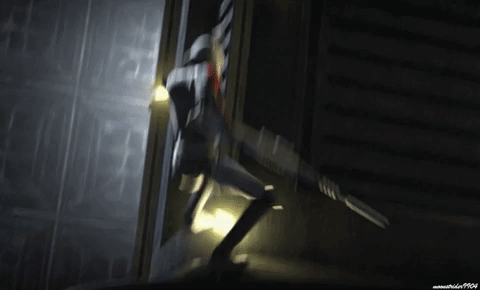

Most Artemis people, especially in their early adulthood, are engrossed in their work or causes. Marriage and childbearing are often far from their minds, or they outright reject them. Though, they like children and are extremely protective of children, like a mother bear who ferociously protects her young. They also prefer to foster independence in children. There are headcanons that Crosshair is not interested in getting married and having children, or he is alright with marriage but chooses to be childfree. These are traits of his Artemis anima. Moreover, Crosshair is not much of a parental figure in the beginning possibly because he views Omega as a dependent, passive child, which is not ideal for an Artemis person. However, as Omega becomes more independent, active and assertive, it is possible for Crosshair to become protective of her while encouraging her to be independent.
A relationship with an Artemis person, be it platonic or romantic, usually resembles the sibling relationship, friendly rivals or the Artemis-Apollo twinship. Their desire to maintain independence in a relationship means they are not drawn to dominating partners and they are not interested in playing the parental role. Their partner is usually their equal with shared or complementary interests, or is the one who nurtures them like teaching them to be more considerate and sensitive. If the Artemis person and their partner are both competitive, they must be careful not to let their competitive nature kill off their relationship, which parallels the myth of Artemis and Orion, where Orion was killed due to Artemis being goaded to take on Apollo’s challenge. Some people do view Crosshair as a person who will treat his partner as his equal instead of dominating them (which is associated with his Poseidon archetype), and his partner is usually as competitive as him, or a nurturing person who opens him up. Crosshair has a strong connection with the Bad Batch, and he is shown to share a friendly competition with Wrecker during the Clone Wars. I interpret Crosshair and Tech having the Artemis-Apollo twinship due to both of them being similar yet different from each other. Crosshair mostly has a brother-sister dynamic with Omega, who usually helps him to be more considerate and sensitive to his feelings.
In the myths, Artemis never suffered but she did bring harm to those who offended her. Similarly, people who identify themselves strongly as Artemis usually cause others to suffer rather than hurting themselves. If an Artemis person is raised to look down on traditionally feminine values, she may develop a contempt for vulnerability and dependency. Her relationships with others are marked with emotional distance and the usual physical unavailability. She may lose interest once her partner wants to get close to her emotionally, or becomes dependent on her, which are seen as “weaknesses” to her. She may even be cruel to her loved ones, treating them as unwanted intruders. Hence, it is important for an Artemis person to realize the importance of love and trust of a special person.
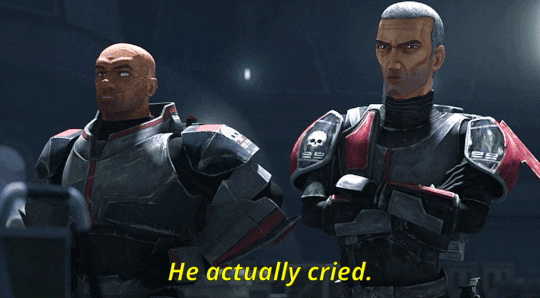
In “Aftermath”, Crosshair expresses his contempt for vulnerability upon seeing Hunter disobeying orders to save Omega. He also dislikes Omega trying to get close to him. It is likely that his inhibitor chip has affected him – possibly strengthening his Artemis anima to the point of becoming cold and cruel. However, he still retains the same contempt for vulnerability even without the influence of the inhibitor chip. In “Return to Kamino”, Crosshair tries to take Omega away from the Bad Batch and he tells Hunter to stop pretending to be a father figure to her because “that is not who he is”. In “Kamino Lost”, Omega tries to connect with Crosshair but he pushes her away again. Fortunately, Crosshair overcomes his contempt for vulnerability after receiving the love and trust from Commander Mayday in “The Outpost”.
Artemis has been called “the Far-Distant Artemis”, and this archetype is marked with emotional distance. This means Artemis people can become so focused on their own goals that they fail to notice the feelings of other people and can get offended by those who interrupt their focus. Their lack of attentiveness can make people who care about them feel insignificant and excluded. To grow beyond this archetype, Artemis people must learn to pay attention to others and be a good listener. They must also remain in touch and accessible to those who care about them.
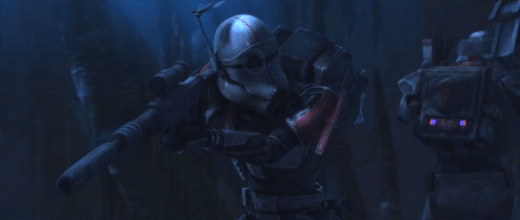
When Order 66 happens, Crosshair’s inhibitor chip is somewhat activated. He becomes adamant of following orders, which leads to conflict between him and the rest of the Bad Batch (especially Hunter). He does not understand why they choose to disobey orders, and he even sighs in frustration when Hunter tells him to stand down in “Aftermath” as if Hunter is interrupting his focus to carry out the order. When Crosshair joins the Empire, he becomes “inaccessible” to the Bad Batch. In “Return to Kamino” and “Kamino Lost”, Crosshair reveals that he already has his inhibitor chip removed and that he willingly joins the Empire. This realization hurts the Bad Batch because it means that Crosshair chooses not to come back in his own volition because he prioritizes his role as a soldier of the Empire. Although Crosshair remains mostly closed-off from other clones, Commander Cody’s advice does affect him in “The Solitary Clone”. Later, in “The Outpost”, Commander Mayday helps Crosshair to open up and become more accessible to him.
Artemis is known to be merciless. In one myth, the hunter Actaeon accidentally saw Artemis and her nymphs bathing in a hidden pool. The goddess turned him into a stag and he was later torn to pieces by his own hounds. In another myth, Niobe insulted Leto by bragging that she had many sons and daughters, unlike Leto who only had two. Leto called on Artemis and Apollo to avenge her without mercy. With their bows and arrows, Apollo killed Niobe’s six sons while Artemis killed Niobe’s six daughters, and Niobe was turned into a weeping pillar of stone.
People who strongly identify as Artemis are extremely loyal to others, tend to get angry at injustice, unafraid to express their point of view, and have a tendency to take action. These are positive traits of Artemis, but there is also a tendency to mercilessly judge the actions of others in an absolute black and white. From this perspective, not just an action is either entirely bad or entirely good, but the person who does the action is also either all bad or all good. With that, an Artemis person feels justified to retaliate or punish the person.

Crosshair is extremely loyal to the Bad Batch. However, when they leave him behind on Kamino, he feels betrayed and view them as bad people. In “Reunion”, Crosshair is determined to hunt the Bad Batch down as they have been branded as traitors to the Empire. In “Return to Kamino”, Crosshair offers the Bad Batch to join the Empire, but they refuse, which from his perspective, makes them all bad people. That is why he tells them not to make the same mistake twice and not to become his enemy. In “Kamino Lost”, Crosshair views Hunter as a bad leader because he has caused the Bad Batch to disobey orders, run away from the Empire and now they are trapped under Tipoca City that is sinking to the ocean floor. In “The Solitary Clone”, Crosshair calls the clones who are questioning orders as traitors like the Jedi because from his perspective, a good soldier follows orders without question, and even a slight tendency to question orders is considered an entirely bad thing, and it makes the soldier a completely bad person.
It is important for an Artemis person to develop compassion and empathy, which may come with maturity and experience. Many Artemis people enter adulthood feeling self-confident and invulnerable. However, after going through suffering, being misjudged or failing at something, they may grow to become more compassionate. They will learn to be more merciful as they learn what it is like to be vulnerable and become more understanding, they realize that people are more complex than they think, and they learn to forgive themselves and others for making mistakes.

Crosshair has always felt confident and invulnerable. He does not believe that he would be replaced by the Empire because of his superiority. He turns a blind eye at the regular clone troopers, who are feeling the plight of being forced into “retirement”. However, that all changes when Crosshair goes through suffering in “The Outpost”. He learns how to be vulnerable to Mayday, which makes him more understanding and compassionate towards the regular clone trooper. This helps Crosshair to become more mature, and realize that the Empire does not care about the clones, including him. Hopefully, Crosshair can learn to forgive himself for making the mistake of joining the Empire and disappointing the Bad Batch.
The goddess Artemis is known for her destructive aspect that is symbolized by the wild boar, one of the animals sacred to her. In Greek mythology, Artemis sent the Calydonian Boar to terrorize the countryside of Calydon because King Oeneus had failed to honour her in his rites to the gods. The Calydonian Boar was described to have burning, bloodshot eyes, thick bristles that stood like sharp spikes, hide tougher than armour, and tusks similar to those of Indian elephants. It trampled vineyards and crops, drove away flocks and herds of animals, and killed many heroes who had tried to bring it down. This rampaging destruction serves as a metaphor for an Artemis person on a warpath.
The rage of Artemis is surpassed only by that of Hera. Although both goddesses appear to share the same intense feelings, the provocation and the direction of the anger are different. A Hera person directs their rage at “the other woman”, while an Artemis person directs their rage at people (mostly men) for depreciating them or for disrespecting something they value. The rage of Artemis can be observed in people reacting to injustice with intense hostility that is often out of proportion to the particular provocation, which leads to a rampage similar to the Calydonian Boar, hurting themselves and many like-minded people along the way.

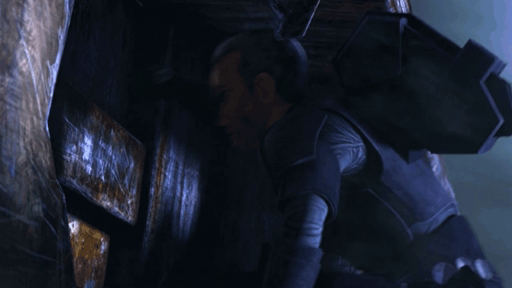
After the Bad Batch leaves Crosshair behind, he is greatly offended by their betrayal and for throwing away their legacy. He hunts them down as if he is like Artemis on a warpath. His rampage causes injuries to himself and his troops. In “The Outpost”, Crosshair is furious that Lieutenant Nolan refuses to provide medical aid to Mayday because “they should not waste the Empire’s resources on a clone”, resulting in his death. Crosshair reacts to the injustice with intense hostility and he shoots Lieutenant Nolan, instantly killing him. However, Crosshair’s action causes him to end up on Mount Tantiss, where he gets experimented and tortured by Dr. Hemlock.
In the myth of the Calydonian Boar, the huntress Atalanta faced the charging boar with a bow and an arrow, or in some versions, a spear. She waited until the boar was almost on her, took careful aim, and then shot the arrow or threw the spear through an eye, which was its only vulnerable spot. Her action successfully wounded the boar. According to Jean Shinoda Bolen, the destructive rage of an Artemis person can only be stopped by what Atalanta did in this myth. The Artemis person must take courage to confront their own destructiveness directly. They must see it as an aspect of themselves that must be stopped before it consumes them and devastates their relationships. They can no longer feel righteous and powerful when they realize how much damage they have done to themselves and others. Humility is what returns their humanity as they become aware that they are flawed humans, not an avenging goddess.
When Crosshair gets angry, he reacts by taking action. However, his actions sometimes hurt himself and others. For example, his decision to hunt the Bad Batch down because he feels betrayed by them worsens the rift between them. By killing Lieutenant Nolan to avenge Mayday’s death, Crosshair ends up being imprisoned on Mount Tantiss and is subjected to experimentation and torture. It is important for Crosshair to realize how destructive his rage is, and how it hurts him and others. He must learn not to let his rage consumes him, and instead become aware that he too is a flawed person.
The myth of Iphigenia depicted the crucial choice an Artemis person would make in their lives. In this story of the Trojan War, the Greek ships had been assembled to set sail for Troy, but no winds arose to fill the sails and carry the fleet to war. Agamemnon, the leader of the Greeks, believed that it was the doing of a god, so he consulted the expedition’s seer. The seer explained that Agamemnon had offended the goddess Artemis on his way to the Trojan War by hunting and killing one of her sacred stags, and she punished him by withholding the winds. The seer stated that the goddess could only be appeased by the sacrifice of Agamemnon’s daughter Iphigenia. At first, Agamemnon resisted, but as pressure from his troops mounted, he tricked his wife Clytemnestra into sending Iphigenia to him, on the pretext that she was to be married to the Greek hero Achilles. Instead, she was prepared for the human sacrifice in exchange for the winds. There were two types of endings for this myth. One version stated that the death of Iphigenia was carried out as demanded by Artemis. In the alternate version, Artemis interceded just at the point of sacrifice, substituting a stag in her place, and carried her off to Tauris, where she became one of Artemis’s priestesses.
Jean Shinoda Bolen interprets these two endings as the possible effects of the Artemis archetype. She believes that every Artemis person likely has certain traits of Iphigenia — young, trusting, vulnerable, receptive, nurturing, the ability to relate to others, the ability to be intimate with others, dependent on others, and the willingness to make sacrifices for the sake of others. On one hand, the Artemis archetype rescues these traditionally feminine values from the devaluation and oppression of the patriarchy, like Artemis rescuing Iphigenia. On the other hand, the Artemis archetype makes a person so intensely focused on their goals that they sacrifice and devalue these traditionally feminine values, like Iphigenia was sacrificed to appease Artemis so the winds could bring the Greek fleet to war.
With that, an Artemis person is faced with a crucial choice: Will they rescue and protect this Iphigenia part of themselves so that it can grow even as they continue with their life and pursue their goals? Or will they be required to kill this Iphigenia part of themselves in order to be as focused, hard and clear as possible?
The myth of Iphigenia is depicted in “Kamino Lost”. Omega represents Iphigenia for she is young, receptive, vulnerable and dependent on others. Hunter also represents some traits of Iphigenia for he is nurturing and he cares deeply for Omega. These values are deemed as traditionally feminine. In this episode, Omega is unwilling to lose AZI so she swims after the droid. Hunter wants to enter the water to save Omega because she is about to drown. At this moment, Crosshair pulls out his rifle and it seems like he is aiming at Hunter, which is why Wrecker, Tech and Echo point their blasters at him. This scene seems to depict the possibility of Crosshair choosing to “sacrifice Iphigenia”, which is “to eliminate Hunter and let Omega drown”. After all, the episode has shown that Crosshair still has conflicts with Hunter and he continues to push Omega away, which can be interpreted as Crosshair devaluing these traditionally feminine values in favour of the Empire and his soldier’s duty.


When it seems that Hunter is in danger and Omega is about to drown, Crosshair is actually aiming at the water and he shoots a grapple that latches onto AZI, allowing him to pull Omega and the droid to the surface. Crosshair’s action to save Omega’s life represents his Artemis anima choosing to “save Iphigenia”, which can be interpreted as Crosshair rescuing and protecting these traditionally feminine values. His action indicates that there is still good in him, and that he can be vulnerable, receptive and nurturing.
To grow beyond the Artemis archetype, one must learn to become vulnerable, to love and care deeply about another person. This usually happens after the Artemis person has “run down”, after they have achieved or failed their goals, or after the pursuit has gone stale. The people who care about the Artemis person may have to wait, or they can get some help from Aphrodite.
The Atalanta myth serves a metaphor for the psychological growth that an Artemis person may go through. Atalanta was a huntress and runner whose courage and capabilities were equal to any man’s. She was left on a mountaintop to die by her father soon she was born. She was then saved by a bear and raised by hunters. She grew up to be a beautiful woman and she devoted herself to the goddess Artemis. A famous hunter named Meleager became her lover and companion. They played an important part in the Calydonian boar hunt where Atalanta successfully wounded the boar and Meleager finished it off. Since Atalanta had drawn first blood, Meleager offered the boar skin to her as a prize. However, Meleager’s uncles, who had been hunting with them, thought it was disgraceful that a woman should get the trophy where men were involved. They tried to take the skin for themselves and claimed the credit for killing the boar. Meleager was outraged by this and he killed them, which then resulted in his mother killing him shortly thereafter.
Atalanta then left the wilderness, and was eventually reunited with her father. Her father recognized her as heir to his throne, and insisted that she should get married, which was something she was not interested of. Many suitors came to win her hand, and she rejected them all. As her suitors became more persistent, she came up with a challenge for them: she would marry the man who could beat her at a footrace, but he would lose his life if he lost the race. Race after race, Atalanta was always in the lead. Finally, the unathletic Hippomenes, who truly loved her, entered the race. He prayed to Aphrodite, the Goddess of Love and Beauty, for help at the night before the race, and she gave him three golden apples to use in the race. During the race, Hippomenes threw the three golden apples in Atalanta’s path three times, which managed to distract her long enough for him to cross the finish line first and take her as his wife.
The Atalanta myth, or more specifically the deadly footrace, is played out in “The Outpost”, and it helps Crosshair to grow beyond his one-sided Artemis anima and achieve wholeness. There are no official explanations as to why Atalanta is distracted by the three golden apples, but Jean Shinoda Bolen provides her own interpretations for the three golden apples, which surprisingly match Crosshair’s character arc in “The Outpost”.
When Hippomenes threw the first golden apple and Atalanta went to take it, she saw her own face distorted by the curves of the apple. The first golden apple is interpreted to have given her the awareness of time passing. Many Artemis people are unaware of time passing until their desire to take up challenges or to reach their goals dwindle. They may become aware that they are not going to be eternally youthful and start reflecting about their course of life. At the beginning of “The Outpost”, Crosshair observes three clone troopers protesting their “forced retirement” due to the Defense Recruitment Bill has been passed by the Senate. Upon arriving at the outpost, Crosshair meets Commander Mayday, who has been guarding the cargo held in the outpost for a year, and has been expecting reinforcements 36 rotations ago. By witnessing the clones being forced into retirement and realizing that a year has passed since the formation of the Empire, Crosshair becomes aware of time passing, and that soon enough, he would be replaced by Stormtroopers, as it is the fate of all clones.
When Hippomenes threw the second golden apple, Atalanta went to retrieve it, and memories of her dead lover Meleager took over her. The second golden apple is interpreted to raise awareness of the importance of love. As yearnings for physical and emotional closeness are stirred by Aphrodite, an Artemis person may become more receptive to love and intimacy, and this feeling is strengthened by the awareness of time passing.

As Commander Mayday gives Crosshair a tour of the depot and its surroundings, he explains that they have been attacked by raiders who have caught them off guard in the last few raids. Mayday believes that the polar conditions have degraded the sensors, which may explain how the raiders get past them. To make matters worse, he is not receiving any replacements from the Empire. At this moment, Crosshair probably starts to recall memories of Hunter and Tech. Hunter would have been able to detect the raiders quickly thanks to his enhanced senses, and Tech would have upgraded the sensors to make it difficult for raiders to get past.
When Crosshair steps on a pressure mine, Mayday goes ahead to disarm it despite he is not an explosive expert and that he does not have the proper equipment to do so. However, he is able to improvise with the tools he has. At this moment, Crosshair probably starts to recall memories of Wrecker. Wrecker is an explosive expert, and he would have the proper equipment to disarm the pressure mine with ease. While Mayday disarms the mine, he asks Crosshair about his unit. This prompts Crosshair to mention that he was part of Clone Force 99, but they are gone. As he recalls the memories of his former squad, he probably begins to yearn for their presence and support. He probably starts to yearn for physical and emotional closeness, which is why he becomes closer to Mayday.
As Atalanta was about to pass Hippomenes and win the race, he dropped the third golden apple. For a split second, she hesitated: should she cross the finish line and win the race, or take the apple and lose? She chose to reach for the apple just as Hippomenes crossed the finish line, winning the race and her for his wife. The third golden apple represents procreative instincts and creativity, which are associated with Aphrodite. In life, there may come a time where achievements become less important to the Artemis person. They may shift their focus to other things like settling down and having a family, or transforming their experiences into some form of personal expression. They start to follow their heart more.
Crosshair and Mayday are sent to retrieve the cargo stolen by raiders. They are successful but they get caught in an avalanche. Crosshair digs himself out of the snow and finds Mayday injured. Mayday tells Crosshair to go because he is not going to make it. Crosshair now must make a choice: should he complete the mission and leave Mayday to die, just like he has said earlier, “no point of carrying deadweight”? Or should he abandon the mission and save Mayday’s life? Just like Atalanta gives up winning for Hippomenes, Crosshair gives up the mission for Mayday. Crosshair is well-aware that he will be reprimanded for not completing the mission, and his icy-cold reputation will certainly be tarnished. However, as he starts following his own heart, his brotherly love for Mayday wins over his ego and his tendency to follow orders.
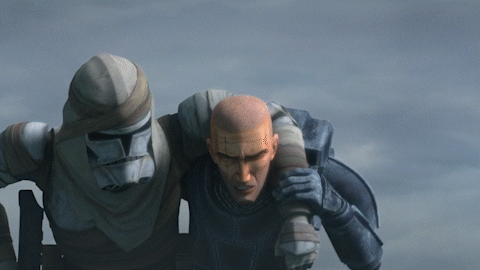
Jean Shinoda Bolen believes that the knowledge of Aphrodite can be brought through the love of another person, which can help an Artemis person to move beyond the one-sidedness of this archetype and achieve wholeness. The Artemis person can turn inward to reflect on what is important to them, and be inner-directed as well as outer-focused. They may realize their needs for intimacy as well as for independence. Once they embrace love, they will have moments to decide for themselves what is most important.
In “The Solitary Clone”, Crosshair begins to turn inward to reflect on what is important to him after Commander Cody tells him that they make their own decisions and choices, and they have to live with them too. Crosshair’s brotherly love for Mayday is what pushes him further to turn inward for reflection. From here, he decides that his loyalty to his brothers (and his sister Omega) and his protectiveness towards them mean the most to him. With the Empire not seeing eye to eye with him, Crosshair finally turns against the Empire.
Besides Artemis, Hera is another prominent archetype in Crosshair’s anima. Hera, or Juno as the Romans called her, is the Goddess of Marriage. She is the wife of Zeus (or Jupiter by the Romans), the chief god of the Olympians, who rules over the heavens and earth in Greek mythology. Her name is thought to mean “Great Lady”, which is the feminine form of the Greek word “hero”. Her symbols are the cow, the cuckoo, the Milky Way, the lily, and the peacock (and its iridescent tailfeather “eyes” that symbolized Hera’s watchfulness). Hera has two contrasting aspects: she is greatly revered and worshipped in rituals as a powerful goddess of marriage, and she is depicted as a vindictive, quarrelsome, jealous shrew due to Zeus’s infidelity.
In her rituals, Hera had three epithets and three corresponding sanctuaries where she was worshipped during the year. In the spring, she was Hera Parthenos (Hera the Maiden or the Virgin). She was celebrated as Hera Teleia in the summer and autumn (Hera the Perfected One or the Fulfilled One), and became Hera Chera (Hera the Widow) in the winter. These three aspects of Hera represented the three states of a married person’s life (or more specifically, a woman’s life in Ancient Greece): in spring, they were single; in summer, they felt completed through a wedding; in winter, they grieved at the end of their marriage due to separation or death of their partner.
Hera is the wife archetype that prompts a person to get involved in a committed relationship and to get married. People who identify strongly as Hera view marriage as a way to gain prestige, respect and honour. They want to be recognized as “someone important”, and they seek out outer acknowledgement by having a large wedding ceremony. They find joy, fulfilment and completeness in marriage, in which they see it as sacred. Just like Hera is married to Zeus, people who identify with the Hera archetype are attracted to competent, successful people like rulers, businessmen or politicians. They are usually not into artists, scholars or humanitarians. Their choice in partners comes from their view of marriage as something that provides comfort and security to their lives. Besides that, some Hera people may view marriage as a way out of a bad situation, especially if their parents resemble Hera’s parents Cronos and Rhea – a patriarchal, dominating father and a powerless mother.
There are many headcanons that Crosshair enjoys security and comfort in his life, which are granted by the Republic’s support. The Republic provides necessities to all the clone troopers such as food, shelter, payment, weapons, training and transport. With that, Crosshair may feel ease to do other things. Many fans agree that Crosshair is the most fashionable of the Bad Batch, and he likes to wear jewellery. He may indulge in the best fabrics for comfort like wearing a pair of sleepwear and/or eye mask that are made of silk. He likely cares about his appearance greatly, which leads to a headcanon that he uses a loofah (suggested by a fan) or a pumice stone (suggested by the person running the Star Wars twitter account) during showers for he cares about his skin. These headcanons evoke the imagery of the Hera archetype in Crosshair – pompous, feelings of superiority and likes attention – basically, a prima donna. He probably gets jealous at Omega because she captures all the attention of the Bad Batch in “Aftermath”.
There are also headcanons that Crosshair likes to indulge the Bad Batch like bringing them to the best restaurants on a planet, buying things they like, or crafting things for them. The writers have come up with a headcanon that Crosshair is the one who creates Lula for Wrecker. I also have a headcanon that Crosshair creates Lula after the Hyperspace Stories #10 because Wrecker has lost the stuffed toy and Crosshair wants to cheer him up. I can imagine Crosshair buying something delicious for Wrecker to eat, getting the best equipment for Tech, and choosing the most comfortable fabric for Hunter to wear as a casual outfit. In “Aftermath”, Crosshair is shown to desire orderliness and cleanliness as he complains about the smell getting worse in the squad’s barracks, and that his bed is spotless and tidy (even his blacks are folded neatly). I have this headcanon that Crosshair is mainly responsible for the orderliness and cleanliness of the Marauder, and that Echo’s arrival has helped to ease most of his burdens. For example, Crosshair makes sure the floors of the Marauder are clean of dirt, dust, mud and food crumbs. He makes sure the lights and ventilation are working properly. He washes their blacks regularly and keeps a tab on their toiletries. He does all of these for everyone’s comfort, including himself.
I have seen people shipping Crosshair with a character that is of a higher status than him like a Jedi, a senator, or a politician, which kind of evokes the imagery of Hera and Zeus. There are many romantic headcanons for Crosshair that evoke the Hera archetype, for example, he buys something that his partner yearns to have regardless of the price, or he creates something for his partner to show his love and devotion. People who identify as Hera tend to share the same friend group and interests with their partner, even when they initially do not like them. It is a general headcanon that Crosshair will reluctantly do an activity with his partner because he prioritizes his partner’s needs and wants over his, which is a Hera trait. I have seen one headcanon that Crosshair is willing to give his partner children if his partner wants them, which is also a trait of the Hera archetype.
People who identify strongly as Hera find fulfilment in playing the role of a housewife or a househusband. They can take care of everything in the house while their partner is away for work. Since Crosshair has some traits of the Hera archetype, it is possible for him to play the role of a househusband well. Imagine yourself coming back home from a long, tiring day of work, and you find that Crosshair has cleaned the entire house, done the laundry, cooked your favourite meal, prepared a bubble bath for you, and planned to give you a body massage to help you relax before you go to sleep. Basically, Crosshair can be a devoted partner that pampers and spoils you, making you feel that you are the most important person in his universe.
The Hera archetype grants a person the capacity for commitment. They are loyal and faithful to their partner, and they are willing to endure and go through difficulties with their partner. They are the ones who stay “for better or worse”, and they are willing to drop everything for their partner. Loyalty means everything to the clones, and Crosshair takes it very seriously. Crosshair is extremely loyal to the Bad Batch, and he will do anything for them. In “The Bad Batch”, when Rex takes charge of the mission after Cody is injured, Crosshair sees it as Rex challenging Clone Force 99 for authority, or more specifically, challenging Hunter’s leadership role. This causes Crosshair to defend Hunter and Clone Force 99 by pointing out that Cody has called them in to help Rex, so Rex has no right to challenge their authority. This scene evokes an image of a Hera person fiercely defending their partner. I can imagine Crosshair leaving the last ration bar for Wrecker, placing a warm blanket on Tech when he has fallen asleep on his desk, and giving Hunter a hug upon seeing how work has overwhelmed him. Crosshair always gives his best to his loved ones, and puts their needs above his.

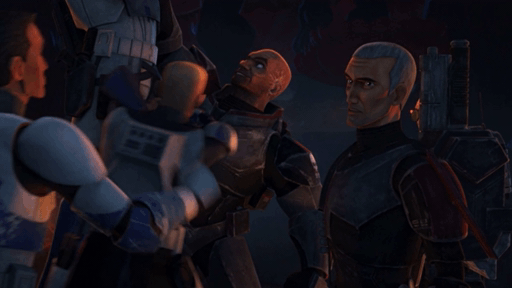

In Greek mythology, Zeus got close to Hera by turning himself into a shivering little bird. Hera took pity of the bird and brought it close to her body to warm it up. Then, Zeus revealed himself as the chief god and made a promise to marry her, in which she accepted. People who identify strongly as Hera may find themselves attracted to powerful and successful people that are also emotionally immature like Zeus. This emotional immaturity is what makes a Hera person to view them as “a poor little creature in need of Hera’s warmth and protection”. This caring trait of Hera can be seen in Crosshair. Although Crosshair can get annoyed at Wrecker’s antics (even telling him to “grow up”), his complaints are never taken seriously by anyone. In “The Bad Batch”, when Jesse defends Rex from Crosshair, Wrecker grabs and lifts him by the throat. Crosshair then defends Wrecker by warning Kix to stay out of it and fights him. This shows that Crosshair is not just protective of Wrecker, he is also enabling Wrecker’s impulsiveness. In “Aftermath”, Crosshair complains about the smell in their barracks and he does not like their laziness on cleaning up the mess. Yet, his complaints are treated as passing comments, and he does not try to change the Bad Batch. He probably grumbles while cleaning up the mess they have created, as if he is just tolerating their bad habits. The Bad Batch probably even sees it as a hobby for Crosshair that is not sharpshooting. Just like how Hera views Zeus in his poor little bird form, it is possible that Crosshair views Hunter, Tech and Wrecker as “poor little boys” in need of his warmth and protection. He feels the need to fiercely defend them from criticisms and insults, and he does not feel the need to change them at all, even if their antics do annoy him.


When the goddess Hera was worshipped in Greek temples and the marriage of Zeus and Hera was ritually enacted, Zeus was called Zeus Teleios, which meant “Zeus, Bringer to Fulfilment”. With that, a Hera person unconsciously places an archetypal expectation of fulfilment on their partner, with the assumption that they will be transformed by marriage. This tendency to project an image of an idealized partner onto a person can usually lead to disappointment, criticism and anger from the Hera person, causing them to urge their partner to change.
To a Hera person, a happy marriage means that their partner is devoted to them, placing their marriage first, and appreciating them as their wife or husband. However, a Hera person is usually drawn to people like Zeus, who are devoted to their careers. A Zeus person usually uses marriage to boost their social image by marrying someone from the same class or higher than his, and they can appear side by side in public. This type of marriage is a personal disaster for a Hera person due to their partner’s lack of involvement and concern of her. Yet, no matter how dissatisfied the Hera person feels about the marriage, they are the least likely to seek divorce and instead, they choose to bury their feelings by putting on the image of a perfect couple.
People who identify strongly as Hera have a tendency to place their relationship with their partner above everything else. They believe in marital promises of eternal devotion and they are willing to make sacrifices for their partner. They can give up their education to be a full-time wife or husband for their partner, get a job to support their partner, or relocate to another town or country if their partner wants to move. Hera people usually do not maintain family ties and friendships made before marriage. They are usually not close with their own children since they tend to prioritize their partner over their children. They also do not maintain their own interests prior to marriage. They instead make themselves conform to their partner’s life, interests and friends. These constraints can lead to problems for a Hera person, and they are made worse if their partners do not give them support to grow beyond the Hera archetype.
The Hera archetype can be such an overwhelming force that it oppresses people, and it turns people into oppressors. This archetype may make an unmarried person feel incomplete and they may end up in a bad marriage. This archetype may also cause a married person to stay in a bad marriage no matter how damaging it is to them. They may constantly nag at their partner for failing to live up to the image of Zeus who fulfils, or they may become enraged and jealous if their partner is unfaithful – be it in a factual or an imaginary scenario.
Whenever Zeus cheats on Hera, the goddess does not channel her rage towards her husband. Instead, she channels her destructive and vindictive rage at the other women (e.g. Callisto, Io, Leto, Aegina), at children conceived by Zeus with other women (e.g. Heracles, Dionysus), or at innocent bystanders (e.g. Echo). Just like the goddess, Hera people tend to judge and punish other people by excluding or ostracizing them and their children, all because they do not meet Hera’s standards. Hera people are judgemental towards people who are unmarried, sensual, or divorced because they are seen as “a threat” that can attract their married partner. Hera people are also judgemental towards people who are not personally threatening like unmarried mothers on welfare.
These disappointed expectations, constraints and judgmental attitude from the Hera archetype can be seen in Crosshair. In “Aftermath”, Crosshair does not see the difference between the Republic and the Empire because their roles as soldiers are being maintained. He expects the Bad Batch to stay as soldiers because that is what they are made for, and that is the only acceptable role for them. Besides that, Crosshair looks down on the regular clone troopers and does not like to work alongside with them because he sees himself and the Bad Batch as more superior than them. Of course, his decision to ostracize the regular clone troopers is also due to him and the Bad Batch are constantly bullied by the regs. When Omega approaches the Bad Batch and sits with them, Crosshair is not welcoming towards her. He sees her as a child, and that she should not hang out with soldiers like them.

Crosshair becomes extremely disappointed at Hunter when he chooses to disobey orders and he starts to prioritize Omega’s safety. To him, good soldiers should follow orders, and Hunter is breaking it. Crosshair’s bitterness towards the Bad Batch grows when they leave him on Kamino and they have taken Omega with them, giving the feeling that he has been replaced. Although he is furious at the Bad Batch, he does not channel his destructive rage towards them, even though the Bad Batch thinks that he is trying to kill them. Instead, he channels his destructive rage towards other people. In “Replacements”, Crosshair executes ES-01 for insubordination and he orders the rest of the Elite Squad Troopers to execute innocent civilians, in which the Bad Batch has failed to do so earlier. In “Reunion”, Crosshair dismisses the Bad Batch for scavenging like rats since they no longer have a stable financial support after deserting the Empire. For Crosshair, being a soldier is the only truly acceptable role for a clone trooper. The life of a mercenary or a bounty hunter is a definite “no” for him and for any clone trooper.
In “Return to Kamino”, Crosshair kills his own Elite Squad Troopers for refusing to stand down as he has ordered. He offers the Bad Batch to join the Empire to have a purpose again. Moreover, he tries to take Omega away from the Bad Batch, even telling Hunter to stop pretending to be a father figure to her, which in Crosshair’s eyes, is something Hunter is not. When the Bad Batch refuses Crosshair’s offer, he gets angry at them, warning them not to make the same mistakes twice and not to become his enemy. Despite witnessing and surviving the destruction of Tipoca City caused by the Empire, Crosshair still chooses to stay loyal to the Empire, and not even Hunter’s advice can get to him.
In “The Solitary Clone”, Crosshair is seen to be eating his meal alone as other regular clone troopers move away from him. It is true that regular clone troopers usually have issues with “defective” clones like Crosshair, but Crosshair’s tendency to limit himself to only the Bad Batch also now becomes a side effect as he is no longer with his former squad. He has nobody close to him in the Empire. Although Commander Cody is a close friend of Crosshair, his eventual desertion wounds Crosshair, causing him to further shut himself off. Furthermore, Crosshair still chooses to return to the Empire despite being stranded on Kamino for 32 rotations, claiming that he is a soldier of the Empire. Even though Crosshair later becomes aware that the Empire is not treating the clones well, he finds himself unable to desert the Empire and his role as a soldier, just like a Hera person finds themselves unable to leave an abusive relationship or marriage.
The Medea syndrome, which originates from the Greek mythology character Medea, describes the spurned woman, which is the negative Hera pattern. The Medea myth is a metaphor that describes the Hera woman’s capacity to put her commitment to a man ahead of everything else, and her capacity for revenge when she finds that her commitment counts for nothing in his eyes.
In the myth, Medea was the priestess and daughter of King Aeëtes of Colchis. The Golden Fleece belonged to the king, and Jason and the Argonauts sought it. Jason needed help to obtain the Golden Fleece as it was well-guarded, and that he needed to complete three seemingly impossible tasks given by the king in a single day. His patron goddesses, Hera and Athena, managed to persuade Aphrodite to make Medea fall in love with him and help him steal the Golden Fleece. Jason begged Medea to help him and promised that he would marry her. So, out of her love and loyalty to Jason, Medea helped him steal the fleece. By doing so, she betrayed her father and her country, and brought about her brother’s death. She fled with Jason, and they eventually settled in Corinth. They got married and had two young sons.
Since Medea was a foreigner, her position was similar to that of a common-law wife. Jason wanted a better life, so he decided to marry Glauce (or Creusa), the daughter of King Creon of Corinth. As a condition for the marriage, Jason agreed that Medea and their children would be exiled. Medea was enraged with Jason for breaking his vows, and she felt humiliated that all her sacrifices and crimes committed for him meant nothing to him. With that, she plotted and carried out her revenge.
First, Medea sent Glauce a gown and a golden coronet that were covered with poison as wedding gifts. Once Glauce put them on, she was burned to death. Her father tried to save her, but he was also burned to death. Then, Medea was in conflict between her love for her children and her desire for revenge. Ultimately, her desire for revenge won, and she murdered her children. When Jason learned of her vengeful plot, Medea fled to Athens in a golden chariot driven by dragons sent by her grandfather, the god of the sun Helios. Despite all the crimes Medea had done, she retained the favours of the gods. As for Jason, since he broke his oath to love Medea forever, he lost favour with Hera and he died alone and unhappy. His story ended with a rotting prow of the Argo breaking off and crushing him in his sleep.
Literal reenactments of the Medea myth are rare, but they are quite common on a metaphoric level. When a person is influenced by Hera and Aphrodite like what happened to Medea, their instinct to mate and their passion for their loved one may cause them to put that relationship above everything. They may leave their family and friends, betray their own values, and cut off any ties if necessary. They will not have any help or support if their partner behaves like Jason.
The Medea person may imagine or attempt to harm their partner’s lover. For example, “Medea” may spread lies to damage the reputation of the other woman or man. Moreover, the Medea person may attempt to destroy their children’s relationship to their partner. They may take the children away, or make efforts to drive their partner away from the children. They may even make their children hate their other parent. It is worth noting that Medea did not murder Jason in the myth. Similarly, the hostile, spurned Hera often harms other people more than the partner who left them.
Crosshair shows his Hera’s destructive rage and the Medea syndrome in “Return to Kamino” and “Kamino Lost”. When Hunter says that they are loyal to each other and not the Empire, Crosshair counters that Hunter is not loyal to him and he has not forgotten that time the Bad Batch left him behind on Kamino. Crosshair is also bitter that the Bad Batch has thrown away their legacy. I have seen headcanons that Crosshair is willing to make tremendous sacrifices for his squad, which aligns with Hera’s capacity for commitment. When the Bad Batch leaves him behind, Crosshair must have felt that all of his devotion and sacrifices mean nothing to his squad. This incident leads him to take on the hostile, spurned Hera archetype.
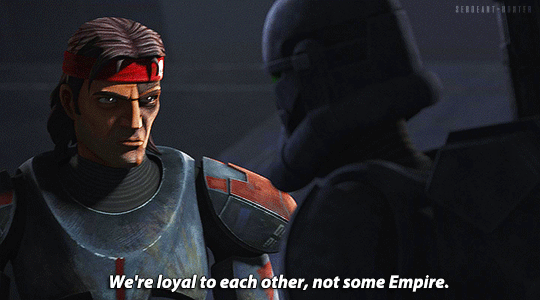
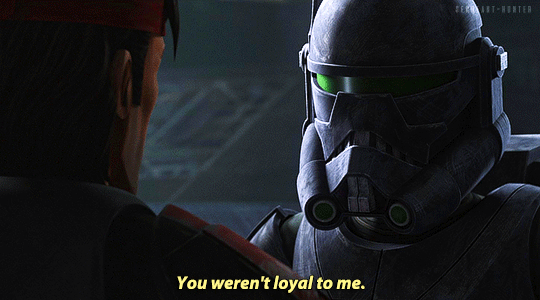
Furthermore, Crosshair tries to take Omega away from Hunter and send her on a shuttle off-world. Hunter pleads with Crosshair not to do it because Omega belongs with the Bad Batch. However, Crosshair says that Omega is in constant danger from living among fugitives like the Bad Batch, and he is doing this for her own good and for the Bad Batch too. Crosshair even tells Hunter to let go of Omega and stop pretending to be something that he is not – a father figure to the child. This argument evokes the metaphoric reenactment of Medea and Jason, where Crosshair is the “Medea” that threatens to take the child Omega away from Hunter the “Jason”. True to Hera’s destructive rage, Crosshair has no intention of killing the Bad Batch despite their alleged treason and their disloyalty towards him. Instead, he kills his Elite Squad Troopers for refusing to stand down.
To grow beyond the Hera archetype, one must recognize Hera’s influence and understand the susceptibilities of this archetype. It is crucial for a Hera person to expand beyond the Hera archetype. They must realize that this archetype at best limits them, and at worst is destructive to them. They must consciously develop other archetypes, which can enrich their life and marriage, and give them the ability to adapt if death or divorce brings the marriage to an end.
Besides that, a Hera person should view marriage as a growth experience instead of an expectation of fulfilment. An insecure Hera person is highly susceptible to jealousy, and they can easily suspect infidelity or feel humiliated by their partner’s inattention. They may alienate their partner with accusations or make their partner be more aware of the effects of their indifferences. Their partner may learn to respond to the Hera person’s needs with compassion. The Hera person must repeatedly decide whom to trust – the suspicious Hera within or their partner. To grow, they must resist Hera and give their partner credit for support and fidelity.
In the myths, Hera has two sons – Ares, the God of War, and Hephaestus, the God of the Forge. Hera favoured Ares, and “like mother, like son”, Ares’s uncontrollable fury on the battlefield mirrored Hera’s uncontrollable vindictiveness. When a Hera person struggles with their vindictiveness and rage, they can transform their rage and pain into creative work by following the example of Hephaestus, whose wife Aphrodite was repeatedly unfaithful to him. Any kind of work, be it mental or manual, can help the Hera person to channel their rage in a healthy manner instead of being consumed and destroyed by it. Crosshair is close to Wrecker, who has a strong Ares archetype. Like Hera and Ares, they both express their rage directly, which is evident in “The Bad Batch” where Wrecker and Crosshair get into a fight with Jesse and Kix. Since Echo has a strong Hephaestus archetype, Crosshair can learn from Echo to channel his rage in a healthy manner.
It is normal for any person to grasp the loss once their partner has left them. For a Hera person, they are likely to believe that their partner will miss them and come back, just like that myth about Zeus and Hera’s reconciliation. In this myth, after a quarrel with Zeus, Hera left him and retreated to the island of Euboea, and there was nothing Zeus could say to change her mind. King Cithaeron then advised Zeus to stir her jealousy by announcing that he was about to marry Plataea, the daughter of Asopus. Then, Zeus arranged a mock wedding ceremony with a wooden statue of a woman that was wrapped up in a dress. Once Hera heard the news, she stormed into the wedding and tore away the dress from the figure, only to discover that it was a lifeless statue. Hera was amused by this prank, and she and Zeus reconciled and returned to Mount Olympus.
This myth provides several psychological elements for a possible reconciliation to occur. Firstly, Hera let go of more than her husband Zeus. She also let go of her hopes that he would change, and let go of the role of victimized, vindictive Hera. After Hera left, Zeus discovered that she was truly important to him. Zeus set up the mock wedding ceremony with a wooden statue to convey the message that each of his affairs had been a symbol to him (like the statue) rather than an important relationship. Hera was amused by it because she finally recognized that no other woman really had mattered to him all along, leading to a reconciliation. Life sometimes follows this mythic happy ending, but most of the time, it does not. A Hera person may see that separation has not changed her partner’s heart. Then, they must accept reality, grieve and move on with their life.
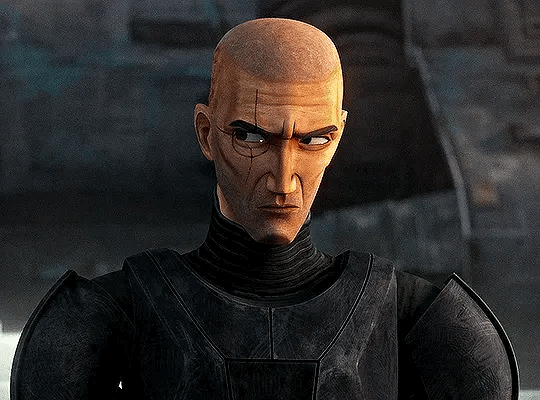
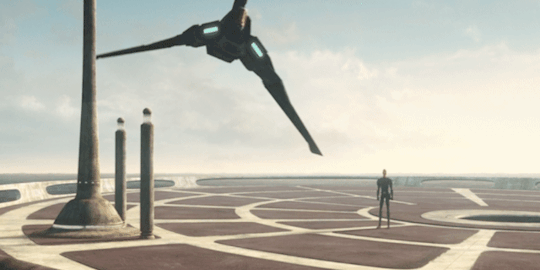
Despite feeling betrayed by the Bad Batch leaving him on Kamino, Crosshair still clings onto the hope that they can be brothers again. He proves his loyalty towards them by killing his Elite Squad Troopers. Then, he offers them to join the Empire as their chance of reconciliation. However, they refuse his offer, forcing Crosshair to face the reality that the separation has not changed their hearts. When Hunter offers Crosshair a chance to rejoin the Bad Batch, Crosshair refuses, claiming that he has made his decision. At this moment, Crosshair lets go of more than the Bad Batch. He also lets go of his hopes that they will change, and lets go of the role of victimized, vindictive Hera. By accepting this reality, Crosshair is able to grieve and move on with his life without the Bad Batch. He stops chasing after them and he lets go of any desire for revenge. Of course, Crosshair is still loyal to the Bad Batch, and this is proven when he lies in his report that they have perished in the bombardment of Tipoca City. He still wants to protect them, even going so far as to send Plan 88 to warn them to hide.
In “The Crossing”, Tech admits to Omega that he does miss Crosshair. When Tech reveals that Crosshair is now under the hands of Dr. Hemlock, Wrecker is surprised that Crosshair has turned against the Empire. Based on his voice, Wrecker is hopeful that Crosshair will come back to them. Tech then pushes the mission to rescue Crosshair because he is their brother, and they do not leave their own behind. Omega, Wrecker and Echo are supportive of the mission, which leads Hunter to give the approval. Their attempt to rescue Crosshair conveys the message that Crosshair is truly important to them.
Since the worship for the goddess Hera was done in a yearly cycle (Hera the Maiden in spring, Hera the Fulfilled One in summer and autumn, and Hera the Widow in winter), there is an archetypal possibility for a Hera person to complete the cycle and begin anew. A Hera person can emotionally “widow” themselves by leaving a relationship or marriage that is empty, abusive or smeared with infidelity. They can then start anew and choose wisely this time. Their drive to be a committed partner can once again be fulfilled in a positive manner as they find themselves in a new relationship or marriage.
Crosshair takes on the archetypal Hera the Widow when conflict arises between him and Hunter, and it gets worse when the Bad Batch leaves him on Kamino. In “Kamino Lost”, Crosshair chooses to emotionally “widow” himself by not returning to the Bad Batch that clearly does not trust him anymore. This is evident when Wrecker, Tech and Echo point their blasters at Crosshair because they think that he is going to shoot Hunter, when in fact, he is going to shoot a grapple to save Omega. Although Crosshair has made a horrible decision to stay with the Empire, he does come to his senses after meeting Commander Mayday. When Mayday is devastated to realize that the Empire disposes the clones despite their loyalty and sacrifices, Crosshair finally understands that loyalty goes two ways. Since this loyalty between the clones and the Empire is only one-sided, Crosshair turns against the Empire. I am sure that once Crosshair is back with the Bad Batch, he can start anew with them and make wiser decisions this time – like he “recycles” himself and takes on the archetypal Hera the Maiden.
Crosshair’s archetype combination is Poseidon, Apollo, Artemis and Hera (similar to Anakin Skywalker). These archetypes are opposites to each other: Poseidon is emotional while Apollo is logical; Artemis is independent while Hera is dependent on others. This combination gives Crosshair a lot of complexity: he is both logical and emotional, is an independent spirit but also deeply cares for his loved ones. In Greek mythology, Apollo and Artemis are twins, and they are both archers, capable of aiming their goals from afar. Apollo is associated with civilizations while Artemis is associated with the wilderness. The Apollo-Artemis combination helps Crosshair to accomplish his goals with ease. He works well with social institutions and he has a love for the wilderness. Besides that, the Poseidon-Hera combination is also possible for it reflects the relationship between Poseidon and his wife Amphitrite. Since a Poseidon person is more in touch with their emotions, they may place high importance on their loved ones, especially if they take on the mature Poseidon that embrace their emotionality in a positive manner. With that, a loving Poseidon can satisfy their Hera partner greatly. The Poseidon-Hera combination makes Crosshair an extremely loyal and committed person. He takes great care of his loved ones and he is fiercely protective of them.
It is worth noting that there is one myth where Poseidon, Apollo, Hera and Athena tried to overthrow Zeus, but they failed. They were punished except for Athena because she was the favourite child of Zeus. This myth gives an insight to the relationship between Hunter (Zeus), Tech (Athena) and Crosshair (Poseidon, Apollo and Hera). When Tech decides not to follow Hunter’s orders, Hunter gets annoyed by it but he lets Tech do his own thing. This is evident in “Cut and Run” when Tech decides to get their ship impounded by the Imperials because this is the simplest solution to get the chain codes. Hunter is angry that Tech goes against his plan, but he trusts that Tech has everything under control. He only warns Tech that Omega is on the ship. On the other hand, when Crosshair decides not to follow Hunter’s orders, Hunter immediately shuts him down. This is evident in “Aftermath” when Crosshair keeps shooting at Caleb Dume despite Hunter repeatedly orders him to stand down. Hunter even questions Crosshair about his actions, wondering what is wrong with him. Moreover, in the Hyperspace Stories #10, Hunter probably senses Crosshair’s frustration with the mission they are given, and he mistakes it as Crosshair questioning orders, which is why he reminds Crosshair that they have their orders. All of these seems to indicate that Tech is Hunter’s favourite, and Crosshair is treated like “the middle child” of the Bad Batch. It is also worth noting that Poseidon, Artemis and Hera are all known for their destructive rage that does not spare innocents, and this reflects on Crosshair’s wrath. If you want to live, do not ever get on his bad side.
Despite all four of his archetypes being opposites of each other, they all prioritize on loyalty and commitment, which are Crosshair’s main values. Crosshair is extremely committed to his duty as a soldier, but he is also committed to his loved ones (probably more than his duty as a soldier). He is fiercely loyal to his loved ones, and will do anything to protect them from harm. If you can see through his cold façade, you will find a man who is willing to make tremendous sacrifices to keep you warm and safe. You just need to be patient with him and be kind to him. As long as you are on his good side, rest assured that you will have a valuable friend and partner in Crosshair.
#star wars#star wars the bad batch#the bad batch#tbb#sw the bad batch#sw tbb#the bad batch analysis#tbb analysis#the bad batch meta#tbb meta#star wars clone wars#star wars the clone wars#sw the clone wars#sw clone wars#the clone wars#clone wars#star wars tcw#sw tcw#the bad batch crosshair#tbb crosshair#crosshair bad batch#crosshair tbb#crosshair the bad batch#bad batch crosshair#clone force 99#archetypal psychology#archetypes#goddesses in everywoman
20 notes
·
View notes
Text

source🌱
#feminine#feminine archetypes#dark femenine archetypes#wild woman#goddess#witch#medicine woman#woman#women
179 notes
·
View notes